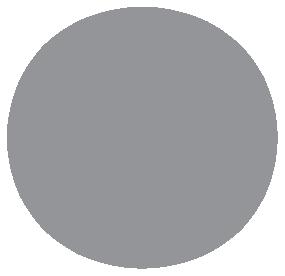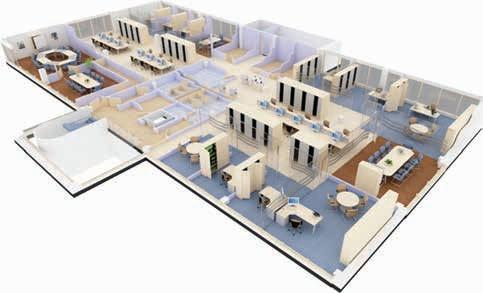




















Xypex System Solutions were required to waterproof and protect the 50 mm thick shotcrete lining on the rail and road tunnel under the Helsinki harbour, Finland.
Xypex Admix C-1000 NF was dosed in the Tunnel to modify the microstructure of the concrete and enhance the durability performance by blocking the pores and healing the static cracks up to 0.4 mm, offering an integral solution that is able to significantly extend the service life of reinforced concrete structures exposed to aggressive environments
For more information on how our solutions can provide sustainable benefits for your concrete assets, please visit our website at www.xypex.com.au or LinkedIn Page.

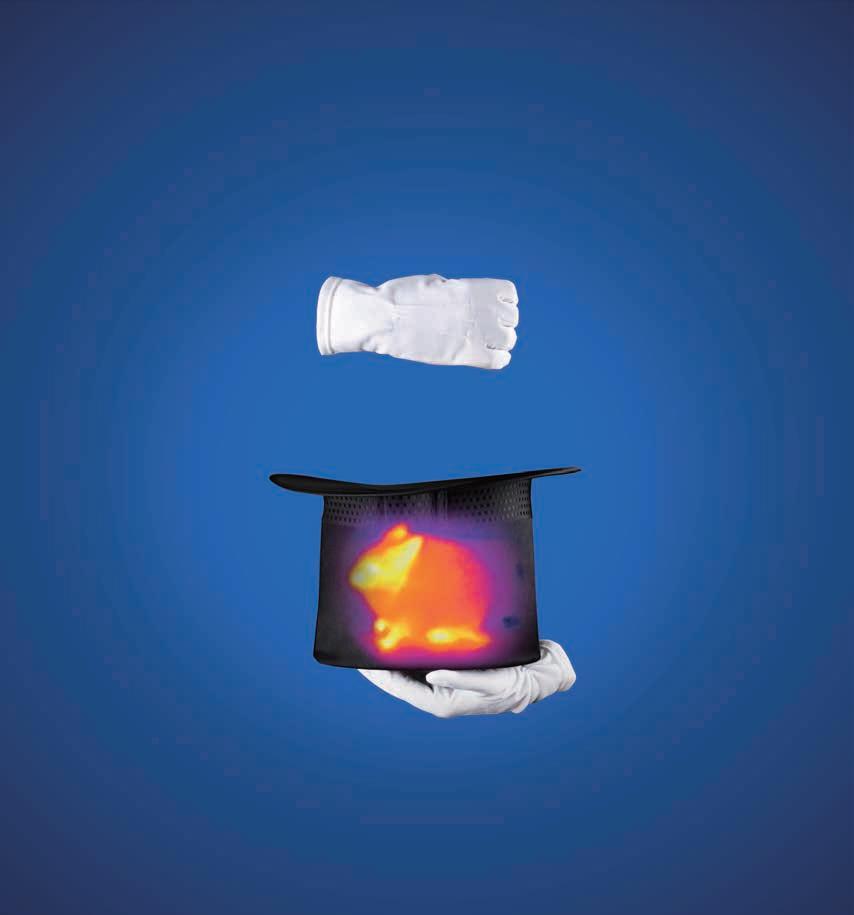
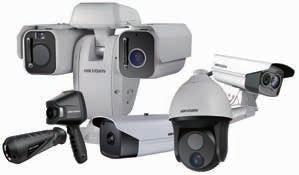


Number 06, JUNE 2018 IEM Registered on 1 May 1959
YANG DIPERTUA / PRESIDENT
Ir. David Lai Kong Phooi
TIMBALAN YANG DIPERTUA / DEPUTY PRESIDENT
Ir. Ong Ching Loon
NAIB YANG DIPERTUA / VICE PRESIDENTS
Ir. Prof. Dr Ruslan bin Hassan, Ir. Lai Sze Ching, Ir. Lee Boon Chong,
Ir. Prof. Dr Norlida bt Buniyamin, Ir. Prof. Dr Jeffrey Chiang Choong Luin, Ir. P E Chong, Ir. Gopal Narian Kutty
SETIAUSAHA KEHORMAT / HONORARY SECRETARY
Ir. Mohd Khir bin Muhammad
BENDAHARI KEHORMAT / HONORARY TREASURER
Ir. Dr Tan Chee Fai
BEKAS YANG DIPERTUA TERAKHIR / IMMEDIATE PAST PRESIDENT
Ir. Dr Tan Yean Chin
BEKAS YANG DIPERTUA / PAST PRESIDENTS
Y.Bhg. Academician Tan Sri Dato’ Ir. (Dr) Hj. Ahmad Zaidee bin Laidin, Y.Bhg Dato’ Ir. Dr Gue See Sew, Y.Bhg. Dato’ Paduka Ir. Prof. (Dr) Haji Keizrul bin Abdullah, Y.Bhg. Academician Dato’ Ir. Prof. Dr Chuah Hean Teik, Ir. Choo Kok Beng
WAKIL AWAM / CIVIL REPRESENTATIVE
Ir. Dr Lee Yun Fook
WAKIL MEKANIKAL / MECHANICAL REPRESENTATIVE
Ir. Fam Yew Hin
WAKIL ELEKTRIK / ELECTRICAL REPRESENTATIVE
Ir. Lim Kim Ten
WAKIL STRUKTUR / STRUCTURAL REPRESENTATIVE
Ir. Dr Ng Soon Ching
WAKIL KIMIA / CHEMICAL REPRESENTATIVE
Ir. Prof. Dr Lee Tin Sin
WAKIL LAIN-LAIN DISPLIN / REPRESENTATIVE TO OTHER DISCIPLINES
Ir. Roznan bin Abdul Rashid
WAKIL MULTIMEDIA DAN ICT / ICT AND MULTIMEDIA REPRESENTATIVE
Ir. David Chuah Joon Huang
WAKIL JURUTERA WANITA / WOMAN ENGINEERS REPRESENTATIVE
Ir. Mah Siew Kien
AHLI MAJLIS / COUNCIL MEMBERS
Ir. Assoc. Prof. Dr Ahmad Kamil bin Arshad, Ir. Dr Tan Kuang Leong, Ir. Hoo Choon Sean, Y.Bhg. Lt. Jen. Dato’ Wira Ir. Ismail bin Samion (Ret. RMAF), Y. Bhg. Dato’ Ir. Hj. Anuar bin Yahya, Ir. Mah Way Sheng, Ir. Gunasagaran a/l Kristnan, Ir. Chen Harn Shean, Ir. Mohd Aman bin Hj. Idris, Ir. Wong Chee Fui, Ir. Prof. Dr Leong Wai Yie, Ir. Razmahwata Mohd Razalli, Ir. Abdul Razak Yakob, Ir. Yau Chau Fong, Y. Bhg. Dato’ Ir. Foong Choy Chye, Y. Bhg. Dato’ Ir. Kisai bin Rahmat, Y. Bhg. Dato’ Ir. Nor Hisham bin Mohd. Ghazali, Ir. Ellias bin Saidin, Ir. Dr Jeyanthi Ramasamy, Ir. Dr Wang Hong Kok, Ir. Yam Teong Sian, Y. Bhg. Dato’ Ir. Hj. Fakharazi bin Hj. Wahijan, Ir. Yasotha Ramachandran Chetty, Ir. Mohmad Asari bin Daud, Ir. Salimi bin Md Saleh, Ir. Dr Lai Khin Wee PENGERUSI CAWANGAN / BRANCH CHAIRMAN
1. Pulau Pinang: Ir. Ting Chek Choon
2. Selatan: Ir. Mohd Khir bin Muhammad
3. Perak: Ir. Abdul Razak bin Ali
4. Kedah-Perlis: Ir. Prof. Dr Rezuwan bin Kamaruddin
5. Negeri Sembilan: Y. Bhg. Dato’ Ir. Zainurin bin Karman
6. Kelantan: Ir. Abrizan bin Abdul Kadir
7. Terengganu: Ir. Atemin bin Sulong
8. Melaka: Ir. Sreedaran Raman
9. Sarawak: Ir. Vincent Tang Chok Khing
10. Sabah: Ir. Dr James Yong Hon Min
11. Miri: Ir. Prof. Dr Lau Hieng Ho
12. Pahang: Y. Bhg. Dato’ Ir. Sharuddin bin Mohd Simin
AHLI JAWATANKUASA INFORMASI DAN PENERBITAN / STANDING COMMITTEE ON INFORMATION AND PUBLICATIONS 2018/2019
Pengerusi/Chairman: Ir. Prof. Dr Ruslan Hassan Naib Pengerusi/Vice Chairman: Ir. Dr Lee Yun Fook Setiausaha/Secretary: Ir. Lau Tai Onn Ketua Pengarang/Chief Editor: Ir. Prof. Dr Ruslan Hassan Pengarang Buletin/Bulletin Editor: Ir. Abdul Razak Yakob Pengarang Prinsipal Jurnal/Principal Journal Editor: Ir. Dr Chuah Joon Huang Pengerusi Perpustakaan/Library Chairman: Ir. C.M.M. Aboobucker
Ahli-Ahli/Committee Members: Ir. Ong Guan Hock, Ir. Yee Thien Seng, Ir. Chin Mee Poon, Ir. Dr Oh Seong Por, Ms. Michelle Lau Chui Chui, Ir. Prof. Dr Abdul Aziz bin Abdul Samad, Ir. Dr Wang Hong Kok, Ir. Razmahwata bin Mohd Razalli, Dato’ Ir. Nor Hisham Mohd Ghazali, Ir. Yasotha Ramachandran Chetty, Mr. Sudharshan Naidu a/l Raman
LEMBAGA PENGARANG/EDITORIAL BOARD 2018/2019
Ketua Pengarang/Chief Editor: Ir. Prof. Dr Ruslan Hassan Pengarang Buletin/Bulletin Editor: Ir. Abdul Razak Yakob Pengarang Jurnal/Journal Editor: Ir. Dr Chuah Joon Huang
Ahli-ahli/Committee Members: Ir. Lau Tai Onn, Ir. Ong Guan Hock, Ir. Yee Thien Seng, Ms. Michelle Lau Chui Chui, Ir. Dr Oh Seong Por, Ir. Dr Wang Hong Kok, Ir. Dr Lee Yun Fook, Ir. Yasotha Ramachandran Chetty, Mr. Sudharshan Naidu a/l Raman
Secretariat: Janet Lim, May Lee, Akmal Shahmeen
THE INSTITUTION OF ENGINEERS, MALAYSIA
Bangunan Ingenieur, Lots 60 & 62, Jalan 52/4, P.O. Box 223, (Jalan Sultan), 46720 Petaling Jaya, Selangor Darul Ehsan. Tel: 603-7968 4001/4002 Fax: 603-7957 7678 E-mail: sec@iem.org.my Homepage: http://www.myiem.org.my


MAJLIS BAGI SESI 2018/2019 (IEM COUNCIL SESSION 2018/2019) COVER NOTE Engineering the World 5
COVER STORY Energy Efficiency Measures for Building Sector
FEATURE ARTICLES
Artificial Intelligence in Engineering ....................16
Industry 4.0: The Industrial Revolution in Manufacturing Industry .......................................19
ENGINEER’S LENS Beauty in Motion
FORUMS
Visit to Busduct Manufacturing Plant ...................29
Sharing Programme on Construction 4.0: The Next Revolution in Construction Industry ................................................................31
World Congress on Advances in Structural Engineering & Mechanics 2017 on “Code Developments in Regions of Low-to-moderate Seismicity” ...........................................................32
FROM BRANCH Sabah Celebrates World Water Day 2018
ENGINEER’S ADVENTURES
Maliau Basin: Lost World of Sabah
PAGE
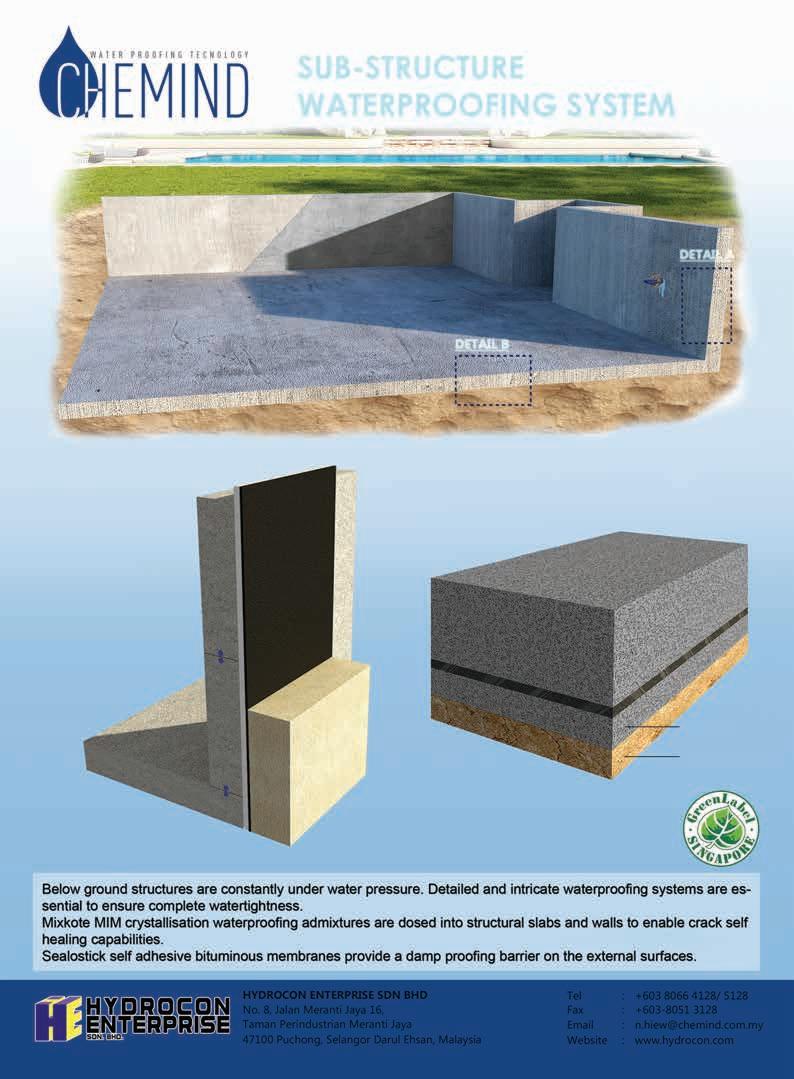



DIMENSION PUBLISHING SDN. BHD. (449732-T)
Level 18-01-03, PJX-HM Shah Tower, No. 16A, Persiaran Barat, 46050 Petaling Jaya, Selangor Darul Ehsan, Malaysia.
Tel: +(603) 7493 1049 Fax: +(603) 7493 1047
E-mail: info@dimensionpublishing.com Website: www.dimensionpublishing.com
Chairman
ROBERT MEBRUER
CEO/Publisher
PATRICK LEUNG
General Manager
SHIRLEY THAM shirley@dimensionpublishing.com
Head of Marketing & Business Development
JOSEPH HOW joseph@dimensionpublishing.com
Editor
TAN BEE HONG bee@dimensionpublishing.com
Contributing Writers
PUTRI ZANINA & ZOE PHOON putri@dimensionpublishing.com zoe@dimensionpublishing.com
Senior Graphic Designer
SUMATHI MANOKARAN sumathi@dimensionpublishing.com
Graphic Designer
NABEELA AHMAD beela@dimensionpublishing.com
Advertising Consultants
THAM CHOON KIT ckit@dimensionpublishing.com
Accounts cum Admin Executive
YEN YIN yenyin@dimensionpublishing.com
For advertisement placements and subscriptions, please contact:
DIMENSION PUBLISHING SDN. BHD. (449732-T)
Level 18-01-03, PJX-HM Shah Tower, No.16A, Persiaran Barat, 46050 Petaling Jaya, Selangor Darul Ehsan, Malaysia.
Tel: +(603) 7493 1049 Fax: +(603) 7493 1047
E-mail: info@dimensionpublishing.com
Subscription Department
E-mail: info@dimensionpublishing.com
Printed by
HOFFSET PRINTING SDN. BHD. (667106-V) No. 1, Jalan TPK 1/6, Taman Perindustrian Kinrara, 47180 Puchong, Selangor Darul Ehsan, Malaysia. Mailer
SM UNIQUE MAILING SERVICES SDN. BHD (44277-W) 80, Jalan Nadchatiram Satu, Taman Taynton View, Cheras, 56000 Kuala Lumpur, Malaysia. Tel: +(603) 9132 9192
JURUTERA MONTHLY CIRCULATION : 22,500 COPIES
Submission or placement of articles in JURUTERA could be made to the:Chief Editor
THE INSTITUTION OF ENGINEERS, MALAYSIA (IEM) Bangunan Ingenieur, Lots 60 & 62, Jalan 52/4, P.O. Box 223 (Jalan Sultan), 46720 Petaling Jaya, Selangor. Tel: +(603) 7968 4001/4002 Fax: +(603) 7957 7678 E-mail: pub@iem.org.my or sec@iem.org.my IEM Website: http://www.myiem.org.my
© 2018, The Institution of Engineers, Malaysia (IEM) and Dimension Publishing Sdn. Bhd.
PUBLICATION DISCLAIMER
The publication has been compiled by both IEM and Dimension with great care and they disclaim any duty to investigate any products, process, services, designs and the like which may be described in this publication. The appearance of any information in this publication does not necessarily constitute endorsement by IEM and Dimension. There is no guarantee that the information in this publication is free from errors. IEM and Dimension do not necessarily agree with the statement or the opinion expresssed in this publication.
COPYRIGHT
JURUTERA Bulletin of IEM is the official magazine of The Institution of Engineers, Malaysia (IEM) and is published by Dimension Publishing Sdn. Bhd. The Institution and the Publisher retain the copyright over all materials published in the magazine.
No part of this magazine may be reproduced and transmitted
of IEM and the Publisher.

ngineering consultancy has changed over the decades to meet industry, peer and stakeholder requirements. Today, it requires not only a strong engineering foundation but also forward thinking capabilities. The industry is not without challenges, such as attracting talents, the high cost of research & innovation and players in other countries who can work at lower rates.
In this issue, JKR Director-General Dato’ Sri Ir. Dr Roslan bin Md. Taha, shares his views on the progression and challenges of the engineering profession in Malaysia.
Consulting engineers must constantly be able to improve and innovate but if challenges are handled well, the business will prove rewarding and gratifying.

Salam & Hello All IEMers (ai-ee-em-mers),
Firstly, I would like to thank the Standing Committee on Information & Publications for entrusting me with the role of Bulletin Editor. It is an honour that comes with enormous responsibility.
This is a role that is not easily filled as the previous editor, Ir. Mohd Khir bin Muhammad (who is our newly elected Honorary Secretary; CONGRATULATIONS!) has done an amazing job in the last 4 years.
This is not the only change we are seeing. In recent weeks, we have seen major changes in the country’s political landscape. At IEM, our new President, Ir. David Lai Kong Phooi, took office at the AGM held on 21 April, 2018. Heraclitus, the pre-Socractic Greek philosopher, said that “Change is the only constant in life”. We must not be afraid of change; we need to be able to adapt to change.
From January this year, there is a new section in Jurutera: Engineer’s Lens. We welcome entries from all IEMers. All you have to do is to send in one or two pictures and a paragraph that describes the pictures. We will continue to welcome all article contributions too.
Lastly, I’d like to wish all Muslim IEMers a wonderful Ramadan and a merry Aidil Fitri.
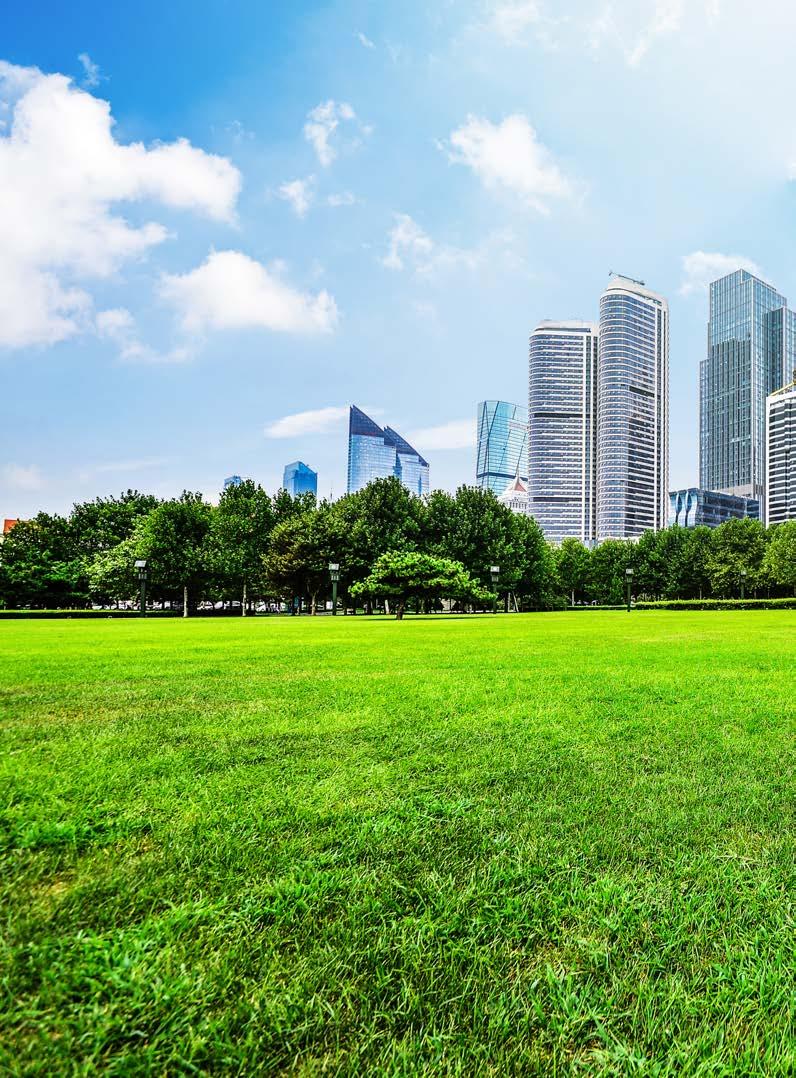
One
of the most challenging issues the world faces today is climate change, caused largely by increased carbon dioxide (CO2) and other human-made emissions into the atmosphere.
According to climate.nasa.gov , the planet's average surface temperature has risen about 1.1 o Celsius since the late 19th century, with 16 of the 17 warmest years on record since 2001. The evidence for rapid climate change is compelling and includes not only an increase in global temperature but also warming oceans, shrinking ice sheets and glacial retreat. These have given rise to global concerns on climate variability and the need for carbon footprint management.
Such concerns have also reached our shores and Malaysia’s commitment to the global fight against climate change is expounded through its commitment to reduce 40% carbon emission per capita by 2020 from the 2005 level as announced by the then Prime Minister at the Conference of the Parties (COP15) – United Nations Climate Change
Conference, held in December 2009 in Copenhagen, Denmark. The anticipated reduction will come from the energy, building, transportation and waste management sectors. These are among the major sources of CO2 emissions.
Studies show that buildings consume about one third of the world’s energy. It is therefore crucial that buildings are constructed, operated and maintained in a way that will reduce energy usage and achieve greater energy efficiency. The field of engineering is an important part of the building construction industry, so it also has major roles to play in the management of CO2 emissions.
Today, functional plans and techniques for the construction of buildings necessitate the inclusion of innovative green technology which will contribute towards reducing CO2 emissions into the atmosphere.
The concept of “engineering the world” through innovative engineering practices is the key solution to constructing sustainable structures. For instance, engineering can, among other things, capture sunlight, manage thermal products to enhance comfort and utilise open spaces under the same roof. Such solutions are designed to respond to environmental challenges, while sustaining the quality of life for the people.
In Malaysia, the Public Works Department (Jabatan Kerja Raya or JKR) is the nation’s leader in engineering and it plays key roles in helping the government deliver on its global commitments to carbon footprint management.
Since COP15, JKR has been leading sustainability measures in the building sector through its sustainable practices and formulation of guidelines. It has been focusing on building projects that can contribute to energy efficiency and savings as well as taken significant action to lead the government’s implementation of sustainable projects using Green Building criteria to achieve sustainable building design.
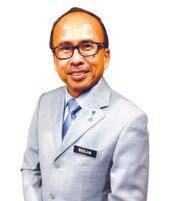
Dato’ Sri Ir. Dr Roslan Md Taha is the Director General of the Public Works Department (Jabatan Kerja Raya - JKR), Malaysia with over 30 years of experience. He is also the President of Board of Engineers, Malaysia. He holds various professional appointments such as President of the Malaysian Structural Steel Association (MSSA) and Chair of the Network of Accreditation Bodies for Engineering Education in Asia (NABEEA) to name a few. He obtained his Ph.D from the University of Wales, Aberystwyth, United Kingdom.

JKR is the government’s largest technical agency. Established 146 years ago in 1872, it has a current strength of over 3,000 technical professionals and 18,000 enforcers.
Leading JKR today is its Director-General, Dato’ Sri Ir. Dr Roslan Md Taha, who is a professional engineer with 36 years of experience in the field.
He says JKR has key roles in Malaysia’s efforts to achieve energy efficiency and savings in the building sector and is involved in several energy efficiency and green demonstration projects, such as Low Energy Office (LEO), Green Energy Office (GEO) and Energy Commission Building. The approach for the construction of new buildings includes the implementation of Energy Efficiency Programmes which places emphasis on the reduction of the use of energy from the stages of design, construction and retrofitting to operations and maintenance.
Singling out the LEO building project, Dato’ Sri Ir. Dr Roslan says JKR was the lead implementation agency. This was a Danish-supported “demonstration project” with a focus on

the development of Energy Efficient (EE) Building and was undertaken for the Ministry of Energy, Green Technology and Water (Kementerian Tenaga, Teknologi Hijau dan Air or KeTTHA).
“We set the Building Sector Energy Efficiency Project (BSEEP) guidelines and published some publications of active and passive designs. Then we distributed these guidelines to various ministries. Government departments and agencies use our guidelines and turn them into Terms of Reference (TOR) before undertaking building projects,” he says.
Under the BSEEP study, energy efficiency audits were carried out for both the public and private sectors. The study also included some demonstration projects to be carried out, and this included retrofitting lights in the old JKR building block to get energy savings.
Through BSEEP, JKR also conducted the Training for Trainers programme to develop qualified energy auditors and managers. In addition to local expertise, the BSEEP study team also engaged a number of expatriates from Denmark, the USA, Australia and Croatia. It was a successful project funded and audited by the United Nations Development Project (UNDP) body. The project received an allocation of US$5 million, which was utilised almost fully, with the remaining spent on energy efficiency training.
Elaborating further, Dato’ Sri Ir. Dr Roslan says all aspects of sustainability are stated clearly in JKR’s Standard Specifications 2014. These specifications are used for all projects implemented by JKR. They include the use of sustainable materials and products, execution of the Erosion and Sediment Control Plan (ESCP), measures ensuring the safety, health and welfare of workers on site, execution
of a good waste management plan, encompassing construction waste, domestic waste and scheduled waste, preparation of environmental management plan (EMP) which includes all Environmental Protection Works (EPW) on site, passive and active design of an energy efficient building and Use of water efficient fixtures.
In addition to meeting the features in JKR’s Standard Specifications, he says JKR designers also strive to incorporate green innovations if the work budget permits.
On the matter of the country’s construction design drawings standards, of which a significant portion is not standardised, Dato’ Sri Ir. Dr Roslan says JKR has produced guideline documentations to standardise the industries, such as JKR BIM Standard, JKR BIM Guideline, JKR BIM Work Process Manual and BIM Requirement for Design and Built Project.
“These guidelines have not been converted into standards, but efforts are under way to do this. We are collaborating with Standards Malaysia and SIRIM to develop standards as we are aware that in building construction, safety cannot be compromised,” he says.
While maintaining its traditional role in building infrastructure such as highways and bridges, JKR has also ventured into unconventional job scopes, such as the RM600 million Total Hospital Information System which was implemented 11 years ago. It was touted as the world’s first comprehensive fully automated hospital operation with state-of-the-art technology.
Last year saw the RM1 billion Renewable Energy Solar Hybrid Project, which accorded JKR its first-mover

Sika® Carbodur® and SikaWrap® for:
• Increased loading requirements due to changes of policy or use of structures
• Exceptional or accidental loading
• Inadequate design or construction
• Durability problems due to poor or inappropriate construction materials
• Increased life-span of ageing infrastructure
• Change in structural system
advantage in big scale renewable energy in remote areas. JKR also received the ASEAN Energy Award for Block F of the PWD’s headquarters through 15% energy saving measures monitored online at zero cost. Another innovative project is the 9km Rawang Bypass, which has put Malaysia on the world engineering map. This is one of the most complex nature-guided infrastructure projects, featuring a 2.7km elevated stretch at a height of 58.2m, cutting across Taman Warisan Negeri Selangor (formerly Templer Park). Its construction, led by JKR, was aimed at minimising the impact on the environment while offering motorists a splendid view of the surrounds.
Another feather in its cap is the Centre of Excellence For Engineering & Technology (also JKR’s research institute) in Alor Gajah, Melaka. The institute has established an innovative road construction technique — the rubberised pavement — which uses natural rubber as an additive to improve durability and stability of bituminous road surfaces.
JKR’s credentials are aptly recognised in attaining four certified ISO Standards — the ISO 9001:2015 Quality Management Systems, ISO 14001:2015 Environmental Management System, OHSAS 18001:2007 Occupational Health and Safety Management Systems and ISO 50001:2011 Energy Management System. The certifications honour JKR as the only government agency in the country to receive multiple recognition. JKR was also awarded the Platinum Certified Green Building Index for its 37-storey skyscraper headquarters in Kuala Lumpur, dubbed Diamond in the City. It is the first high-rise building in the country to receive this highest category of green certification.
These are just some achievements which speak volumes of JKR’s success in transforming itself from a conventional government entity to one with an innovative and progressive outlook. This encompasses JKR’s role to further contribute towards the nation’s sustainable development, particularly in energy efficiency and savings as well as carbon emission reduction.
Dato’ Sri Ir. Dr Roslan says that, in line with the Government policy to have continuity of sustainable development, JKR has launched JKR Sustainability & Green Mission 2.0, in which part of the elements are energy efficiency and renewable energy.
“As part of our action plan, we have installed energy saving fittings, particularly LED luminaires in new projects. With grants allocated by KeTTHA, JKR has implemented several projects which involve retrofitting existing fittings with LED luminaires in
government buildings,” he says, adding that the 11 buildings retrofitted with LED luminaires had recorded energy savings in terms of kilowatt hours of between 50% and 60% for lighting systems. The buildings involved in the retrofitting exercise were Blocks A & B of the Ministry of Works, which registered a cost saving of 7% in electricity bills.
Commenting on JKR's CAST (Environment & Energy Branch or Cawangan Alam Sekitar & Tenaga), the designated implementing agency for the UNDP-supported Building Sector Energy Efficiency Project (BSEEP) that was completed in mid-2017, Dato’ Sri Ir. Dr Roslan says it has achieved the desired targets.
“At the beginning of BSEEP in 2012, a BEI target of 180 Kwhr/m2/year was fixed for the building sector energy usage using the average baseline of 200Kwhr/ m2/year. Buildings under JKR implementation can now achieve a BEI of 160 Kwhr/m2/year, a 20% reduction in electrical energy consumption,” he says. He adds that the Energy Management Guidelines and a new Energy Efficiency Code of Practice for residential buildings were also completed and disseminated via seven training programmes nationwide.
In addition, JKR successfully organised a knowledgesharing event for industry players and stakeholders on BSEEP’s achievements and the way forward for energy efficiency in the local building sector. Through BSEEP, JKR has proposed for the Building Sector Energy Efficiency Regulation to be formulated, while successfully implementing the Credit Guarantee Facility by the Malaysia Debt Venture (MDV), which is dedicated to Energy Service Companies (ESCOs) investment.
Currently, Dato’ Sri Ir. Dr Roslan says KeTTHA is preparing the Terms of Reference (TOR) for the development of an Energy Efficiency and Conservation (EE&C) Law and it is expected to be gazetted by Parliament soon.

JKR has direct control of projects it is assigned to design and implement, based on the directive that all government projects are to be implemented by JKR. However, he adds, in the unlikely event that another agency implements a government project, the Economic Planning Unit (EPU) under the Prime Minister’s Department, has already specified in its guideline, Garis Panduan Dan Peraturan Bagi Perancangan Bangunan by Jawatankuasa Standard dan Kos, Unit Perancang Ekonomi, Jabatan Perdana Menteri © 2015, where requirements of Energy Efficient designs and other sustainable elements are specified for all government buildings.

“Whether a developer will opt for EE features boils down to the local government where the project is located. Not all local governments have adopted the EE guidelines but it is good for us to go for the development of low carbon cities, which can work through the enforcement of law. It must be ‘bottom-up’, so even the public can propose ideas to make things better but when it comes to enforcement, it must be ‘top-down’. Unless and until all local governments enforce EE ByLaws or guidelines, we may not see a drastic change in safeguarding the environment in the interest of future generations. Positive attitude to contribute towards this must be there,” he says.
Meanwhile, there are still many government-owned and leased facilities which have old and inefficient airconditioning chillers that may adversely impact the government’s aim to reduce energy use and achieve emission reduction targets to cut down national carbon intensity. Dato’ Sri Ir. Dr Roslan says that last year, JKR replaced six 20-year-old centrifugal chillers and 12 chilled and condenser water pumps at the Ministry of Works Building in Kuala Lumpur with highly efficient centrifugal chillers and pumps.
“The energy saving incurred from the new installation has been measured and verified to be 33% and the avoided carbon emission is 552 tonne of equivalent CO2,
which would have required 2,900 adult trees to absorb every year,” he says.
On the adaptation of an EE culture to transition to the use of energy-efficient LED lighting, Dato’ Sri Ir. Dr Roslan says JKR has developed electrical specification for LED luminaires and applied it to illumination designs for new projects. JKR has listed several brands of LED luminaires in JMAL, which is JKR’s Electrical Material Approval List as a guide for procuring LED luminaires in projects.
“JKR supports the government’s initiative in applying energy efficient road lighting luminaires and has implemented LED road lighting in some projects since 2012. However, the Return of Investment for LED luminaires is still high compared to HPSV lighting due to cheaper tariff on electricity bills for road lighting. This has discouraged more projects from adopting LED lighting on new roads,” he says.
Another cost-saving measure is the incorporation of the appropriate Building Management System (BMS) with energy management features.
“When JKR designs our building projects, we do so to a minimum of 3 stars as specified under our green rating tool called pH (Penerapan Hijau) JKR, in which we incorporate both the passive design and active design requirements.

The active design is more about how we can save energy by using double-glazed windows and energy-saving LED lightings as well as tapping as much sunlight as possible,” says Dato’ Sri Ir. Dr Roslan.
“JKR incorporates our guidelines on energy savings and green features and we also use the Malaysian Carbon Reduction Environmental Sustainability Tool (MyCREST) to calculate carbon emission. MyCREST is mandatory for all government projects costing over RM50 million. Below that amount, we apply the pH JKR tool. This is the law that we comply with.”
The Local Government Department (Jabatan Kerajaan Tempatan or JKT), under the Ministry of Urban Wellbeing, Housing and Local Government, has also included By-laws 34A which makes it mandatory for new or renovated nonresidential buildings with air-conditioned space exceeding 4,000m2 to be designed according to the requirements of MS 1525 with regards to the Overall Thermal Transfer Value (OTTV) and Roof Thermal Transfer Value (RTTV) and provided with an Energy Management System. However, at the moment, only three states (Selangor, Penang and Terengganu) have gazetted By-Laws 34A.
On the extent to which JKR has adapted and is facilitating the government to achieve Low Carbon Cities Framework (LCCF) benefits in national infrastructure development, Dato’ Sri Ir. Dr Roslan says through 72 projects involving the implementation of MyCREST and pH JKR in building and road projects, JKR has made a projection to achieve energy consumption reduction of ~ 69,202,203kWh; CO2 emission reduction of ~ 51kTCO2 eq’ and CO2 reduction in 20 years ~ 1,025kTCO2 eq.
“These facilities are mainly in urban areas and therefore contribute to the LCCF aspirations. However, JKR does not plan townships. Our role is more in isolated individual design. When we plan for EE, we focus on government buildings, including public hospitals; almost all are undertaken by us.
The Ministry of Health undertakes hospital maintenance as it does not have the expertise or capability to build hospitals,” he says.
“We have started designing and incorporating Building Information Modelling (BIM) in hospital projects. I am proud that we have done 100% BIM design for Hospital Parit Buntar, which is the first public hospital to incorporate BIM design. By incorporating BIM, especially in hospital projects, we can minimise wastage and expedite the construction, which can get complicated in terms of electrical and mechanical disciplines.”
Since 2010, JKR has been implementing several pilot projects using BIM. The Hospital Parit Buntar project is just one of them. Through these projects, JKR has created the need and opportunity for more people to be involved in projects using BIM methods and has set a standard applicable to the Malaysian working environment. This standard includes guidelines and best practices in implementing BIM in the lifecycle of a project.
Dato’ Sri Ir. Dr Roslan is pleased that Hospital Parit Buntar was also the first project for which JKR issued the Letter of Award (LA) together with the contract document
that allowed the contractor to start the construction immediately. To date, he says, JKR has succeeded to do so for 25 projects.
This is the new transformation that JKR has set to achieve from this year. He says 10% of JKR projects must achieve the issuance of the LA together with contract document to expedite construction work. Last year JKR’s Key Performance Indicator (KPI) was for 50% of its projects to achieve 3-in-1 completion at one go, that the Certificate of Completion is issued once a project is completed, and the Built Drawing is also completed together with the Statement of Final Account. This is one of Dato’ Sri Ir. Dr Roslan’s aspirations which JKR has succeeded in achieving.
When asked about the use of BIM in the on-going construction of the Pan Borneo Highway, he says: “The use of BIM in infrastructure projects is still very new. As technical advisor for the project, JKR will get the experience and learn lessons to will develop standards and guidelines from its implementation. Although JKR has several projects that require the contractor to implement using BIM, it is not JKR’s policy to choose only BIM-compliance contractors. However, in line with the government’s aspiration, JKR encourages all contractors to use BIM for many of its benefits.
“We want more engineers to be BIM ready. We also have the In Building Solution (IBS) to produce less wastage in modular design and the government has made it a policy that government projects must achieve IBS score of 70% and above as compared to 50% obtained by the private sector currently. The government is playing the lead role, with the Construction Industry Development Board (CIDB) monitoring the industry.”
Dato’ Sri Ir. Dr Roslan is passionate about developing competency in the field of engineering and he begins by doing so within JKR. He says: My other aspiration is to see engineering professionals in Malaysia become highly qualified."
To date, Malaysia has almost 120,000 registered graduate engineers, of which 18,371 are professional engineers. As of 31 December, 2017, JKR has 3,488 professional engineers comprising 1,933 civil engineers, 373 electrical engineers, 409 mechanical engineers, 317 architects, 414 quantity surveyors and 42 building surveyors. However, the percentage of those who obtained professional qualifications only stood at 19.7% or 686. Dato’ Sri Ir. Dr Roslan hopes to see the percentage increase to 25% of JKR professionals getting their accreditations in a year or two.
From last year, JKR made it mandatory for its professionals to obtain the Professional Engineer (PE) certification, which is the highest standard of engineering competence. Dato’ Sri Ir. Dr Roslan says those who obtain PE will get 5% mark in their yearly assessment, the Laporan Nilaian Prestasi Tahunan (LNPT).
“With PE, they will also have better chances of being promoted. We apportion our marks as follows: LNPT 75%,
interview 20%, and PE 5%. Next year, which is the third year of implementation, we will increase the PE percentage to 10% as a further effort to beef up the number of professionals in JKR; this will also contribute to the country’s total,” he says Dato’ Sri Ir. Dr Roslan notes that the Malaysian construction industry is evolving to be all about building with new approaches which are faster, better and more cost effective. There is, however, competition from overseas constructors which can also deliver these expectations. JKR therefore has to empower local contractors to be competent in BIM in order to compete with the international counterparts.
He says JKR plays its part by collaborating with CIDB to move the Construction Industry Transformation Programme (CITP), which will foster general awareness and understanding among local contractors as well as to ease the adoption and implementation of BIM and provide general and technical guidance on BIM implementation.
“JKR will also provide BIM technical advisory services to local contractors and design consultants involved in the implementation of BIM JKR projects, so that BIM’s execution objectives can be achieved. However, contractors and design consultants should be open-minded and accept the improving work method when they implement BIM in their projects. Implementation will be affected if contractors or design consultants are unable to execute BIM effectively,” he says.
JKR, he adds, has always been committed to and is involved in several BIM programmes organised by government agencies, professional bodies, universities and private agencies since 2010 in terms of sharing of experience and knowledge, discussions on current issues, competency improvement through training and best practice development.
So far, JKR has collaborated with CIDB, SIRIM, Universiti Malaysia Pahang (UMP), Royal Institution of Surveyors Malaysia (RISM), Polytechnic, Kolej Kemahiran Tinggi Mara, Community College, the Department of Survey and Mapping Malaysia (JUPEM), Brunsfield, The Institution of Engineers Malaysia (IEM), Persatuan Arkitek Malaysia (PAM) and others. He emphasises that this approach will
help construction industry players to understand the JKR’s adoption of BIM in government projects.
One of the quickest ways for local contractors to become competent in their undertakings is through joint ventures with international counterparts as the contractors are expected to gain from the transfer of knowledge. However, the disparity and widening of the gap between the transfer of knowledge and absorption of knowledge have generally been an issue in the joint international undertakings. About this concern, Dato’ Sri Ir. Dr Roslan puts on his cap as President of the Board of Engineers Malaysia (BEM).
He says: “From BEM’s point of view, I can say that the Board can only regulate registered professionals in the country, while foreign professionals must comply with the country’s regulations to get jobs here. We have prepared and submitted some papers to the Minister of Works requesting the government to allocate 30% for local consultants’ input in mega government projects rather than award 100% to foreign consultants except when we do not have local expertise available. If we have the expertise, why not give the opportunity to local consultants so that we can have a share of the cake and in the process, we may pick up new knowledge through transfer of technology?”
Dato’ Sri Ir. Dr Roslan will continue to helm JKR in implementing the agenda to reduce the country’s carbon emission by focusing on having new buildings constructed and guided by the various green and sustainability criteria it has put in place while at the same time remaining alert for global technological development in the field.
JKR will focus particularly in categories that include Energy Efficiency through Passive and Active Design, Sustainable Site Planning and Management towards complying Environmental Management System (EMS) JKR 14001: 2008 and Water Efficiency.
Dato’ Sri Ir. Dr Roslan says there will be more concerted efforts in formulating action plans to further accelerate the nation’s energy efficiency and green development agenda.



When we mention Artificial Intelligence (AI), technicolour images of the Terminator robots, Skynet and a post-apocalyptic world may be what comes to mind. Hollywood has certainly played a role in formulating our perception that the rise of intelligent machines can only end in the destruction of planet Earth. But is AI really that dangerous to humankind?
For a start, let us define AI. Borrowing from Wikipedia, the definition of AI is intelligence demonstrated by machines. Actually this term was first used at a conference in Dartmouth College in 1956, where John McCarthy defined it as “the study and design of science and engineering of making intelligent machines”.
AI used in engineering combines hardware and software components. Think of robots in a car assembly line and the software that controls them. They are, in themselves, quite impressive feats of engineering, but are they intelligent?
It can be a surprise to learn just how smart and sophisticated our use of AI in engineering has become. Smart production lines are definitely the way of the future; think Industry 4.0. But exactly how does AI make such a big difference to the engineering sector?
IN MANUFACTURING: AI gives us the ability to design, develop and build machines which are capable of performing extremely complicated tasks. Machines that are capable of learning and improving without human intervention are the ultimate goal and this will have significant and wide-ranging implications. Furthermore, in our pursuit to create more powerful AIs, we are uncovering knowledge about how our own brains work and how we approach the learning process, both consciously and unconsciously.

Source: http://www.innomag.no/artificial-intelligence-infinity-beyond/
Perhaps the most notable example of AI being used in engineering is in car manufacturing. The combination of software and hardware on the manufacturing floor has grown progressively more advanced over the years. Initially, robots performed simple engineering tasks that involved relatively large components and movements. Today, they are capable of precision movements and of emulating the most intricate parts of the process.
IN PRODUCTION: A cement mill should provide a defined range of quality and optimal energy consumption. Based on sensor data and algorithms like boosted gradients and linear regression, the system provides advice on how to adjust the operational parameters. So a mill that cannot be supervised by an experienced engineer can still be
controlled. From there, it is only a small step towards automatic controlling. The algorithm adjusts regularly based on incoming sensor data as machine parts wear down or parts of the process change.
IN CONSTRUCTION: AI is already impacting the construction industry. Here the definition of AI is in the simplest level of using machine learning (an AI technique) to solve problems and to execute tasks with greater speed and accuracy. AI has started to change the way buildings are designed, constructed and utilised upon completion.
Areas where AI is already having an impact in construction include alerts, wearable sensors for site safety, autonomous site machinery, construction site survey and building information modelling (BIM). The ability to inspect buildings using trained AI software, frees the engineer

Source: https://www.ukconstructionmedia.co.uk/ features/rise-artificial-intelligence-constructionsector/
from the mundane tasks of physically doing the inspection.
ON ENGINEERS: Many engineers fear that their jobs will soon be taken over by sufficiently advanced robots and automation. As our manufacturing and design capabilities continue to expand, we are able to build machinery that is capable of replicating almost everything that humans can do on an assembly line.
Their fears are not unfounded as automation has taken away jobs from people in a number of different areas. Perhaps this is where policy and regulation may play a role.
However, automation frees the engineer from having to do mundane, boring, repetitive tasks and allows them to focus on higher level creative tasks instead. AI is opening new, exciting horizons and these opportunities should be embraced. It is important to realise that many of these advances will make a big difference to our ability to tackle the largest issues facing our civilisation.
In my perspective, the union of AI and Engineering is to produce AI Engineering which deals with invention, innovating, designing, building, maintaining, research, improving structures, machines, tools, systems, manufacturing processes, components, materials, processes, solutions and organisation.
AI definitely has a role to play in engineering our world and this change should embraced by the professional.
Author's Biodata
focusing on engineering advisory and consulting services,
efficiency, energy management, automation, artificial intelligence and cybersecurity.
Title: 1-Day Course on HAZOP Training
27 June 2018
Organised by : Oil, Gas & Mining Technical Division & Chemical Engineering Technical Division
Time : 8.30 a.m. - 5.30 p.m.
CPD/PDP : Applying
Title: 1-Day Workshop on Energy Management
28 June 2018
Organised by : Electrical Engineering Technical Division
Time : 8.30 a.m. - 5.30 p.m.
CPD/PDP : Applying
Title: Pre AGM Talk on “My Dams”
30 June 2018
Organised by : Water Resources Technical Division
Time : 9.00 a.m. - 11.00 a.m.
CPD/PDP : 2
Title: 31st AGM for Water Resources Technical Division
30 June 2018
Organised by : Water Resources Technical Division
Time : 11.00 a.m. - 1.00 p.m.
CPD/PDP : 2
Kindly note that the scheduled events are subject to change. Please visit the IEM website at www.myiem.org.my for more information on the upcoming events.
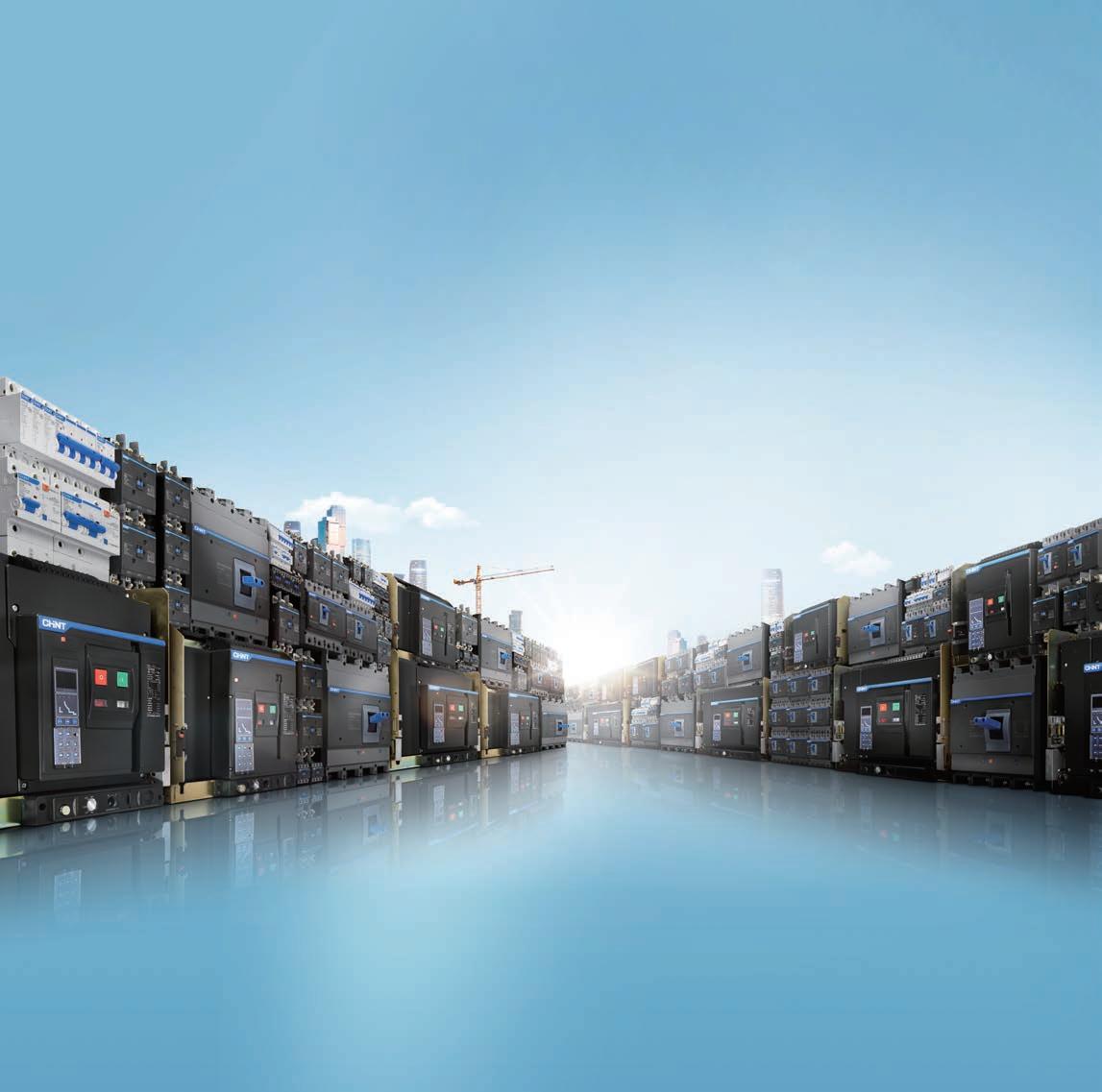

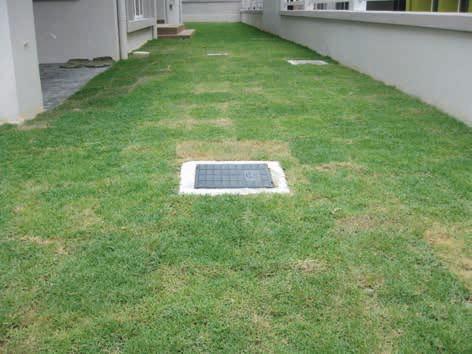





















With the fast development of Internet of Things (IoT) and the wave of smart manufacturing services, the German industry has clearly realised that future production methods will be smarter and become a standard which every country will refer to.






For the 4th Industrial Revolution (also commonly known as Industry 4.0) in manufacturing, Cyber Physical System (CPS) will be the main foundation, and this includes intelligent manufacturing, digital factory IoT and Internet of Services, through Information and Communication Technologies (ICT) to achieve integration between virtual technology and machine.
The smart factory will be built to connect the whole value chain of a product. Industry 4.0 will totally change human life. The First Industrial Revolution used water and steam power to mechanise production. The Second used electric power to create mass production. The Third used electronics & information technology to automate production. Now Industry 4.0 is building on the Third, the digital revolution that has been occurring since the middle of the last century.
It is characterised by a fusion of technologies that is blurring the lines between the physical, digital, and biological spheres.
The core value of Industry 4.0 is the Cyber Physical System which interconnects all components in the supply chain, such as end user, supplier, smart factory, production line,
machine and product. In principle, the intelligent network will cover cyber physical systems, communication facilities, intelligent control systems, sensors and embedded systems (see Figure 1).
Industry 4.0 will integrate IoT and services network into industry systems completely. In addition, the traditional production model will be transformed into highly customisable, intelligent and service oriented model.
In future, CPS will link human, machines and information. Industry 4.0 is the era of intelligent manufacturing. Physical and digital worlds will be integrated to become CPS. Traditional manufacturing will transform into services oriented manufacturing, and hybrid products will be manufactured to meet the needs of different customers.
Smart manufacturing is a complex engineering system such as manufacturing execution system (MES), CPS, robotic systems and highly intelligent manufacturing control systems. Figure 2 shows the smart manufacturing systems.




We are a supplier of high quality geosynthetic products used for soft soil stabilization, slope reinforcement, coastal erosion protection, river bank protection, landfills, drainage, road and railway construction.
Our Products:
NEXTILE NON-WOVENS
NEXFORCE HIGH-STRENGTH WOVENS
NEXGRID GEOGRIDS
We also provide design, specification, bill of quantities, cost estimate and drawings free-of-charge.








Get in touch with us: Tel: 03-6142 6638 Fax: 03-6142 6693
sales@neusynthetics com
Sales Team:
Lee Hui Seng (012-3293378) Fazrol (012-3163341)
A Nehemiah Group of Companies www neusynthetics com
Augmented Reality Systems Integration Cloud Computing Autonomous Robot Additive Manufacturing Simulation Cyber Security Internet of Things (IoT) Big Data Analytics
The business model of Industry 4.0 has features such as integration of cyber and physical manufacturing, manufacturing based on network, an autonomous and adaptable logistics systems that is directly interconnected to IoT and the smart factory. Customers can also participate in full scale production process. The new business model of Industry 4.0 will affect the development of a traditional company. It will also restructure the whole value chain of the business network and impact the traditional company.
There is a 6C system (Cloud, Connection, Cyber, Community, Content and Customisation) related to big data and a 6M system (Material, Method, Machine, Measurement, Model and Maintenance) related to manufacturing. Combining both will enable the smart factory to be realised, integration of horizontal and vertical information as well as a seamless information link between the supply chain and the client.
The 6C Category
1. Cloud: Cloud computing and big data analytics will enable rapid response from company.
2. Connection: In the age of IoT, everything is interconnected via sensors and networks.
3. Cyber: The economies of scale generated in a virtual environment is larger than that of the physical world
4. Community: Through social networking and gathering of information from the social network, to predict the future trends.
5. Content: With real time and sufficient content as well as more transparent information.
6. Customisation: Improved customer satisfaction, flexible manufacturing and shorter production line.
The 6M category:
1. Material: Based on Material Requirement Planning (MRP), to minimise material usage during production stage and optimisation based on smart supply chain systems.
2. Method: Automate and optimise the process for new products
3. Machine: Machine to Machine, connected via IoT, to improve efficiency and reduce time.
4. Measurement: implementation of Total Quality Control, for real time quality control.
5. Model: Simulation model is generated, which allows optimisation of the production process.
The Malaysian Government has formulated the National Policy on Industry 4.0 Blueprint and The Ministry of International Trade & Industry has proposed the nine technology drivers/pillars for Malaysia as Autonomous Robot, Big Data Analytics, Cloud Computing, Internet of Things, Additive Manufacturing (3D Printing), Systems Integration, Cyber Security, Augmented Reality and Simulation (see Figure 3). However, most small and medium industries generally hesitate to adopting Industry 4.0 as they perceive investment cost as high and so still continue to use cheap foreign labour instead. As a result,
the country’s industry is regarded as being in between Industry 2.0 and Industry 3.0 in terms of manufacturing technology. Industry 4.0 can offer the manufacturing industry benefits such as increased flexibility of production and increased productivity. Engineers play an important role to support the industry towards Industry 4.0. The industry needs to constantly reinvent itself and the adoption of Industry 4.0 can be considered part of the improvement process. The digitalisation of the manufacturing process will help solve important business issues so that industries have a high chance of remaining relevant and reaping success in the long run. It is hoped that Malaysian industries will transform with Industry 4.0 to ensure international competitiveness and economy sustainability.
[1] IDC. 2015. Ten Predictions of China Manufacturing Industry 2015. http://www. idc.com.cn/about/press.jsp?id=ODc2. Accessed on 3 May 2018..
[2] Jay, L., Behrad, B. and Kao, H. 2014. Recent Advances and Trends of Cyber-Physical Systems and Big Data Analytics in Industrial Informatic. IEEE Int. Conference on Industrial Informatics (INDIN) 2014.
[3] Jay, L, Edzel, L., Behrad, B. and Kao, H. Recent advances and trends in predictive manufacturing systems in big data environment. Manufacturing Letters. 1(1): 38–41.
[4] MITI. 2017. FAQ on Industry 4.0. http://www.miti.gov.my/index.php/ pages/view/industry4.0?mid=559. Accessed on 3 May 2018.
[5] Padinyan, M.V. 2017. Industry 4.0: The Future is Here. https://www. thestar.com.my/opinion/columnists/ along-the-watchtower/2017/09/06/ industry-40-the-future-is-heremalaysia-cannot-afford-to-lag-in-aworld-facing-swift-exponential-cha/. Accessed on 4 May 2018.
Author's Biodata
and Chief Technical Director of Robolab Technology Sdn. Bhd.
Title: 2-Day Course on Negotiation Skills in A Project Environment
3-4 July 2018
Organised by : Project Management Technical Division
Time : 8.30 a.m. - 5.30 p.m.
CPD/PDP : Applying
Kindly note that the scheduled events are subject to change. Please visit the IEM website at www. myiem.org.my for more information on the upcoming events.
The objective of the IntPE and APEC Engineer Registers is to ease the process of gaining access to work and to practice in other economies. Engineers of these two Registers shall have their competence recognised by members’ jurisdictions.
Once a member is an International Professional Engineer and an APEC Engineer in Malaysia, he can use the abbreviation “IntPE (MY)” and “APEC Engineer” after his name. His membership registration numbers will be:
1. APEC Engineer
2. International Engineer Register (IntPE)
With this, the member can then be an International Professional Engineer or an APEC Engineer with another foreign jurisdiction.
However, an Engineer cannot use the abbreviation, IntPE, twice if he/she is also an International PE in another country. He/she must choose one or the other. Most would choose to use the one that is not in their own jurisdiction but it is a personal choice. One thing is certain, the Engineer cannot use both abbreviations, e.g. IntPE (MY) and IntPE (AUS).
APEC Engineer is not a recognised post nominal but there is nothing to prevent Engineers from describing themselves as such or putting that on their business cards. There is no need to reference the jurisdiction from which this is attained. Therefore, on the name cards, it should read:
Ir. XYZ, P.Eng, MIEM, IntPE (AUS), APEC Engineer

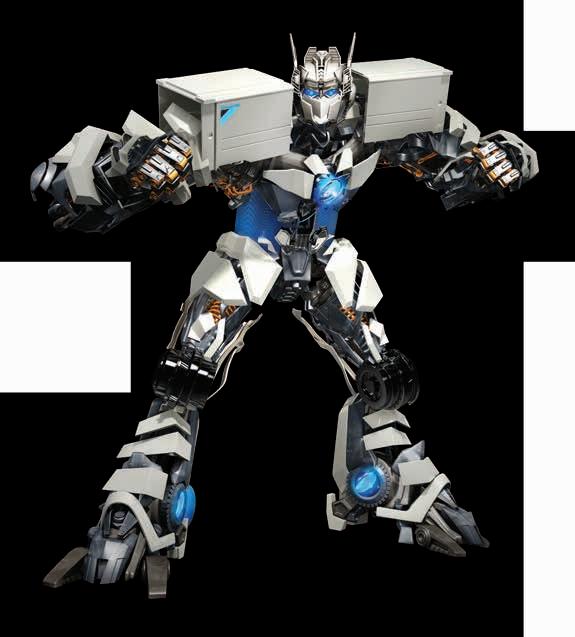
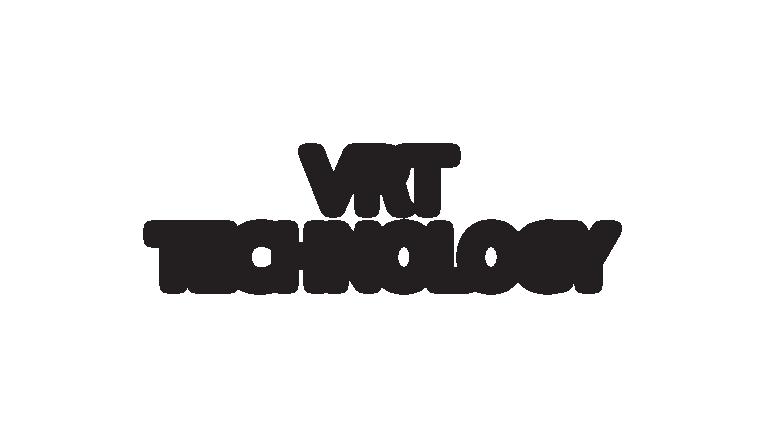
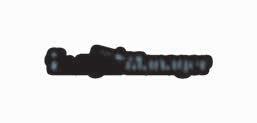











Iused a 400mm telephoto prime lens to capture these Blue-tailed Beeeaters (Merops philippinus) in action. These birds come from the Meropidae family. Who would have guessed that these beautiful birds could be spotted in the neighbourhood of Seksyen 17, Petaling Jaya, Selangor?
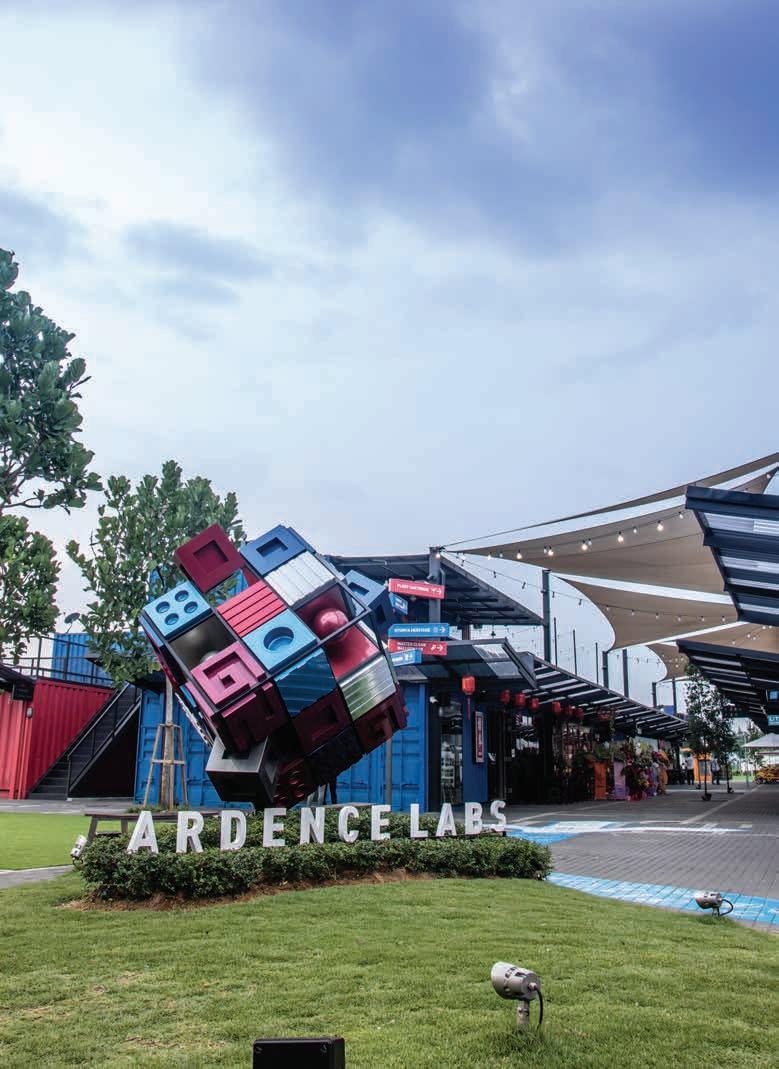
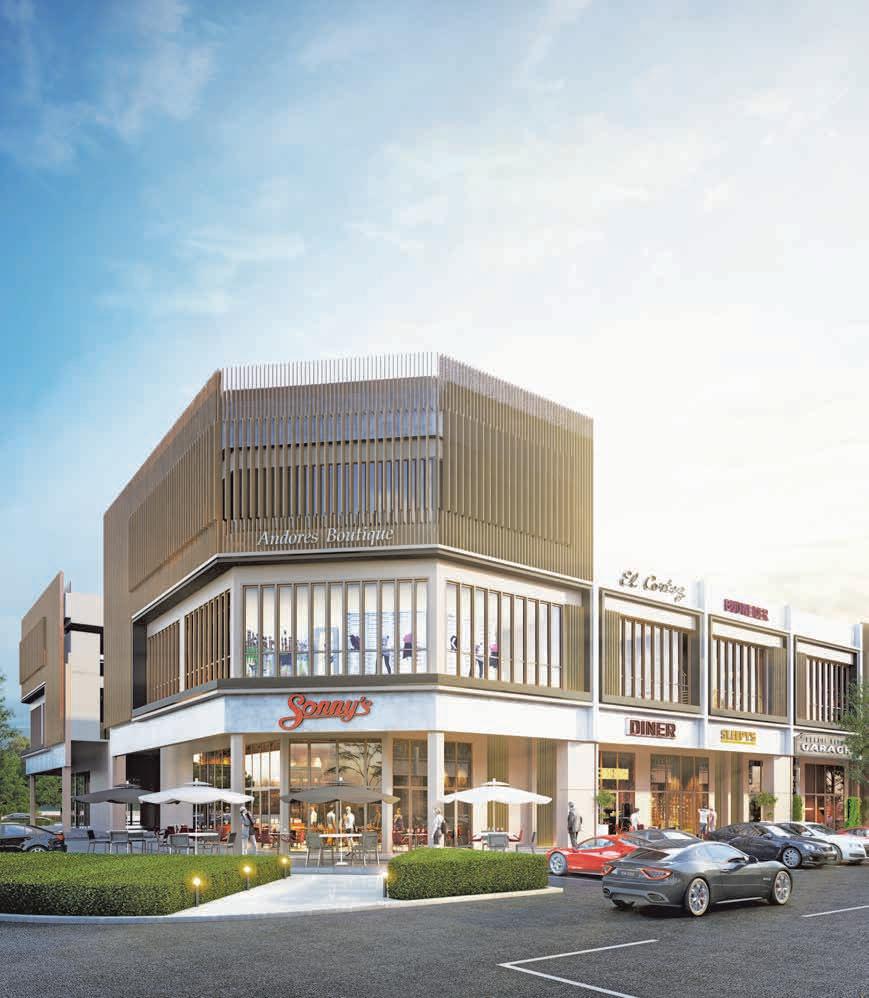









by Ir. Shum Keng Yan
In April 2018, we looked at addressing the first perception of “Significance”. Let us now look at the perception of “Timing”.
Take a scenario where a person works unsafely. The supervisor sees the act but does not take immediate action to engage with the person. At the end of the year, during the performance review, the supervisor brings up the unsafe act to the person. How does the person feel? He may have a vague recollection, if any at all, of the unsafe act. This is what we mean by “timing”. Action needs to be immediate.
In the February 2018 article, we read that the outcome from working unsafely and getting away without injury could be felt immediately. This encourages a repeat of the unsafe behaviour.
To address this “immediacy”, any action to correct an unsafe act needs to be taken as early as possible and as close to the venue as possible. The action should include coaching the person on the unsafe act, ensuring proper working standards are in place, sharing the learning and so on. These will reinforce the expectations on working safely.
In order for this to work, a team leader needs to demonstrate safety leadership and take action at the workplace as early as possible. Thus, the shopfloor leadership plays a crucial role in driving “timing”. The higher you go in hierarchy, the longer it takes for the correct response to be translated to the ground.
In the next article, we will look at “Consistency” as well as how all these tie together.
Time to give suggestions and ideas at pub@iem.org.my.
The time is always right to do what is right. “ “
Dr
Jr.


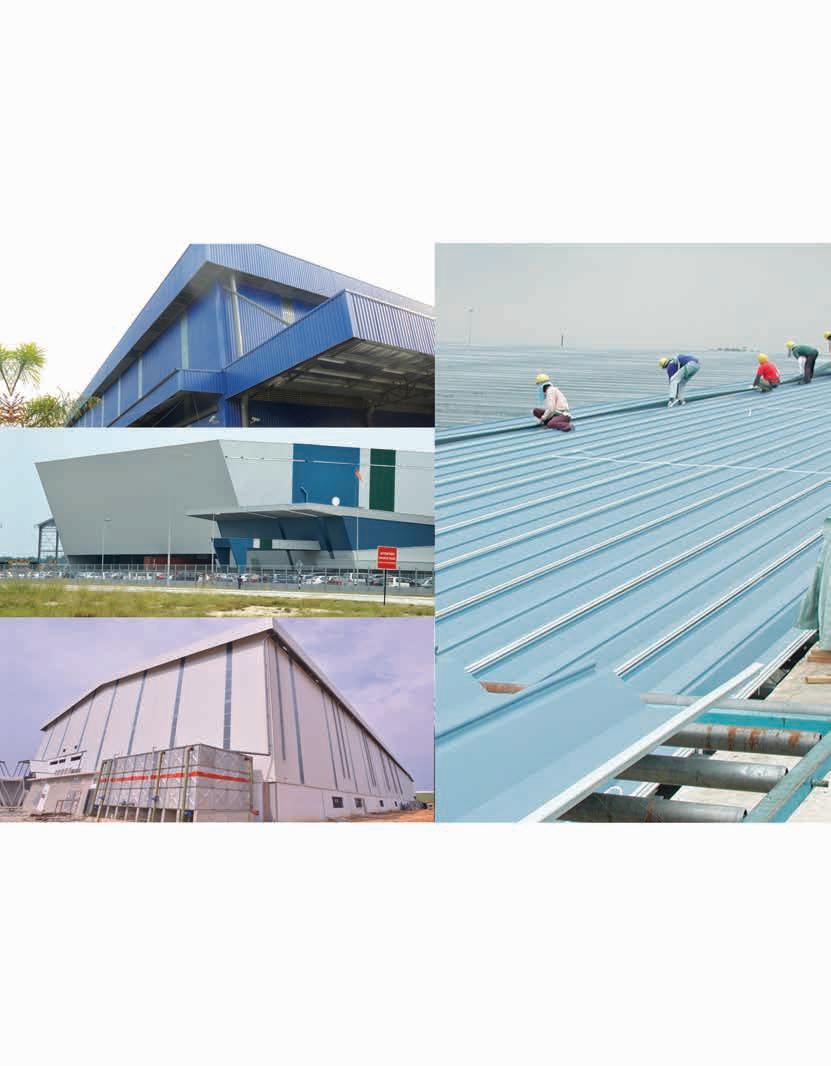





reported by

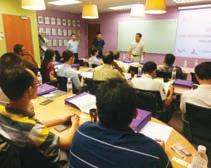



Aone-day visit to the LINKK Busway Systems at Balakong was organised by IEM and LINKK Busway Systems on 5 August 2017. The visit is educative as it lets the guests know more about “busduct”.
Busduct is a sheet metal duct which consist of copper as the conductor bar (busbar) or sometimes aluminium. It is used in the electrical power distribution of buildings and carrying high amount of current in it. The visit also provides the knowledge on the structure of organisation as well as the factory operation. In addition, it also helps in learning through real working environment apart from theoretical studies.
LINKK Busway Systems (M) Sdn. Bhd. is the busduct specialist that owns the brand MEGADUCT which established since 1992, and it has supplied busduct to over 30 countries worldwide.
With the continued research and development process, the company keeps improving in product design
and providing highly reliable products to the market.
The factory visit helps in better understanding on each process of busduct manufacture such as material cutting, bending, welding, curing, assemble and testing. Each process plays important roles in developing the quality end product which complies with the international standards.
Some demonstration was done on that day to show the quality of product such as conductor hardness testing, insulation strength testing after water submerged and fire resistance testing.
At the end of the visit, a group photo is taken with all the participants and workers as a prove for footstep to the factory.
LINKK has fantastic performance with many successful projects throughout the years. No matter local market or overseas, Megaduct brand is always one of the top competitor in Asia Pacific.





Busduct is essential in many types of building as it provides electrical distribution which involves large currents. Thus, LINNK has supplied busducts in many projects at different countries.
The busduct can be horizontal or vertically installed. In high rise building, the busduct is normally installed vertically which placed in riser room. Horizontal busduct can be found at the area of indoor building carpark, factory and shopping malls.
Airport/High Speed Rail Station















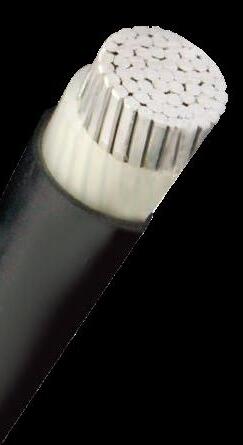
reported by

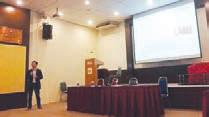
Emerging technologies have changed the engineering environment to one with a fast pace. Cloud computing, internet of things, wireless sensor network, big data and mobile internet are starting to be implemented into industries.
The advances of science and technology continuously support the development of industrialisation all over the world. From a technological evolution perspective, there are four stages commonly identified with industrial revolution.
The first three industrial revolutions took place over two centuries and were the result of, respectively:
1. The use of wind, water and steam energy to power machinery,
2. The introduction of electricity to manufacturing for mass production and
3. The use of automation technology for manufacturing.
For the 4th Industrial Revolution, governments around the world have initiated different plans such as Advanced Manufacturing Partnership (United States), Industrie 4.0 (Germany), La Nouvelle France
Industrielle (France), Future of Manufacturing (United Kingdom), Made in China 2025 (China), Innovation in Manufacturing 3.0 (South Korea) and Smart Manufacturing (Netherlands).
The new trends and advancements in the manufacturing industry are also able to give the construction industry a boost. The digital revolution in construction design has created building information modelling (BIM), which allows for the planning and management of construction information as well as to visualise the design in a 3D environment.
Unlike other industries, the construction sector has been slow to adopt new technologies and has certainly never undergone a major transformation. As a result, productivity has been stagnated in the last 4 decades or, in some cases, even declined.
On 13 January, 2018, the Consulting Engineers Special Interest Group (CESIG) organised a Sharing Programme on “Construction 4.0: The Next Revolution in Construction Industry”.
This programme is one of the many CESIG initiatives to promote awareness of the 4th Industrial Revolution among members of IEM. It provides a comprehensive look at technological trends which will be shaping the global engineering profession and workforce of tomorrow in the construction industry.
The four speakers were Ir. Dr Tan Chee Fai (Current Technology Trends in construction Industry), Ir. Prof. Dr Leong Wai Yie (Big Data and Analytics for Construction Industry), Ir. Tejinder Singh (Artificial Intelligence) and Ir. Dr Low Cheng Yee (Mechanisation for Construction Industry).



reported by CIVIL AND STRUCTURAL


TDr Daniel Looi Ting Wee Ir. Lim Ek Peng
his article reports on the two IEM-sponsored technical papers presented at ASEM17, a threeday world conference in structural engineering held at KINTEX II, Ilsan, Seoul, South Korea on 29-31 August, 2017. ASEM17 was chaired by Professor Chang-Koon Choi from KAIST University, who is an alumnus of The University of Illinois at Urbana Champaign.
The biannual event gathers structural engineering researchers and practitioners from around the world to participate and present state-of-the-art findings on various perspectives of structural engineering. Many of the papers were of good quality and some were selected to be published in various SCI-indexed journals (for example, Earthquakes and Structures, Structural Engineering and Mechanics, Steel and Composite Structures, Computers and Concrete) in Techno-Press series of publications.
The IEM-sponsored papers were presented at the mini symposia, “Code Developments in Regions of Low-to-moderate seismicity, Part I and II”. Engineers and researchers
from countries and regions of similar seismicity to Malaysia – South Korea, China, Hong Kong, India, Sri Lanka and Australia – also took part in the symposia which was chaired by Prof. Han-Seon Lee from Korea University and Professor Nelson Lam from University of Melbourne Australia.
The authors and the titles of the two papers are listed below; the published
proceedings can be downloaded from the internet links given:
1. D.T.W. Looi*, H.H. Tsang and M.C. Hee, “Seismic Hazard Modelling for Malaysia and Singapore” in Part (I): Seismic hazard studies. [1] http://www.i-asem.org/ publication_conf/asem17/6.ES/ W4F.1.ES2372_3460F1.pdf
2. D.T.W. Looi, E.P. Lim* and M.C. Hee,

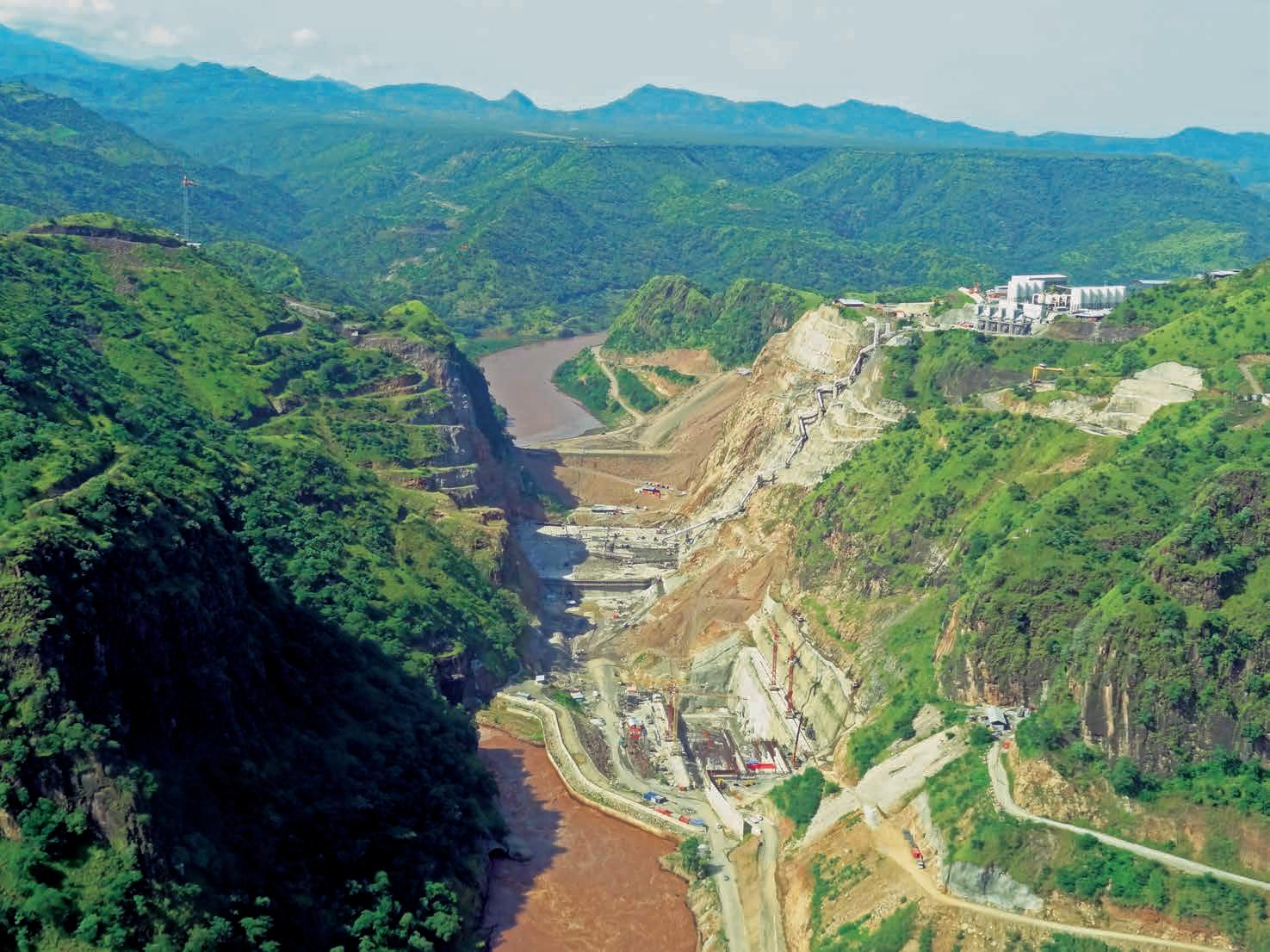

08:30 - 17:00 Registration
09:00 - 09:10 Opening Ceremony
T1O: Opening Remarks (Chang-Koon Choi)
09:10 – 09:50 Plenary Keynote Lecture
T1P: KAIST Reform in the Fourth Industrial Revolution (O Ok Park, Korea)
09:50 - 10:10 Coffee Break
10:10 - 10:45 Keynote Lectures I
T2A: Topology Optimization of Structures subjected to Stochastic Dynamic Loading (B.F. Spencer Jr.,USA)
T2B: Robot Technology and the Future (Jun Ho Oh, Korea)
10:50 - 11:25 Keynote Lectures II
T2C: Sustainable urbanization through underground development –towards an urban underground future (Antonia Cornaro, Switzerland)
T2D: Frontier Technologies in Steel and Composite Structures (Brian Uy, Australia)
11:30 - 12:05 Keynote Lectures III
T2E: Bioinspired Structural Materials: Virtual Processing and Virtual Testing (C.S. David Chen. Taiwan)
T2F: Recent Advances and Innovation in Steel-Concrete Composite Structures (Dennis Lam, UK)
08:30 - 17:00 Registration
09:00 - 09:35 Keynote Lectures IV
W1A: On the reduction methods of structural finite element models (Phill-Seung Lee Korea)
W1B: Performance Based Earthquake Engineering in a Moderate-Seismicity Region: South Korea (Han-Seon Lee Korea)
09:40 - 10:15 Keynote Lectures V W2A: Tunnelling on terrace soil deposits: Characterization and experiences on the Bogota-Villavicencio road (Julio E. Colmenares, Colombia)
W2B: A Unified Practical Approach for Estimating the Effects of Rare Dynamic Loading on Structures (Nelson Lam,Australia)
10:15 - 10:30 Coffee Break
10:30 - 12:00 Concurrent Sessions
W3A: Optimum Design of Structural and multidisciplinary (Shutian Liu, Jianhua Rong and Bin Xu)
W3B: Composite Members and Structures
W3C: Multi-hazard mitigation and sustainability assessment of smart structures (Zheng Yue, Y. Dong and Bu Zhanyu)
W3D: Nano chemistry
W3E: Modern Multidisciplinary Geomechanical Problems (Hatam Guliyev)
W3F: Structures and Materials
W3G: Tunneling and Underground Works in Extreme Conditions
W3H: Energy
08:30 - 12:00
09:00 - 09:35 Keynote Lectures VI
H1A: An orthotropic model for concrete structure subjected to impact loading (Hyo-Gyung Kwak, Korea)
H1B: Alkali-Silica Reaction in concrete – numerical modelling: an engineering approach (Andrezej Winnicki, Poland)
09:40 - 10:15 Keynote Lectures VII
H2A: Buckling Restrained Braces for Existing and New Reinforced Concrete Frames (Keh-Chyuan Tsai, Taiwan)
H2B: New photocatalysts for hydrogen production by water splitting (F.M. Linares, USA)
10:15 - 10:30 Coffee Break
10:30 - 13:00 Concurrent Sessions
H3A: Structural Engineering
H3B: Steel Construction
H3C: Structural Health Monitoring/Nondestructive Evaluation
H3D: Recent Advances in Evaluation and Design of Concrete Structures (Hyo-Gyoung Kwak)
H3E: Bridge Engineering and Tall Structures
H3F: Bridge Technology for Life-span Extension and Carbon Emission Mitigation (Hoon Sohn, Taek-Ryong Seong and In-Gyu Kim)
H3H: Multiscale & Multiphysics Approach to Environmentally Assisted Cracking (Afrooz Barnoush and Hisao Matsunaga)
13:00 - 14:30 Concurrent Sessions
T4A: Computational Mechanics
T4B: Plasticity, Fatigue and Fracture
T4C: Bridge Inspection Using Unmanned Aerial Vehicles (Hyung-Jo Jung)
T4D: Computational Technologies in Concrete Bridges & Buildings
T4E: Advances in Experimental Testing and Numerical Simulation of Extreme Loadson Structures (Sashi K. Kunnath)
T4F: Experimental Investigations of Seismic Performance of Structures
T4G: Improvements in Conventional Tunneling
T4H: Multi-Physics and Multi-Disciplinary Problems
14:30 - 14:50 Coffee Break
14:50 - 17:20 Concurrent Sessions
T5A: Robotics
T5B: Innovative applications in steel connections (Michael CH Yam)
T5C: Smart Structural Systems
T5D: Engineering Properties of Advanced Concrete and Concrete Structures (Chao-Wei Tang)
T5E: Analytical and qualitative methods in elasticity and plasticity (Sergei Alexandrov)
T5F: Base-Isolated Structures and Seismic Analysis
T5G: Innovation in Mechanized Tunneling
T5H: Nano and Micromechanics for Heterogeneous Materials (Gunjin Yun and Seunghwa Yang)
13:00 - 14:30 Concurrent Sessions
W4A: Monitoring based structural modal identification and state assessment (Ting-Hua Yi and Hua-Peng Chen)
W4B: Fluid-Structure Interactions I (Alam Md Mahbub)
W4C: Structural Health Monitoring of Railway System I (Yi-Qing Ni, Xiao-Wei Ye, Sung-Han Sim and Soo-Jin Cho)
W4D: Concrete & RC Structures Construction
W4E: Strengthening of reinforced concrete structures using external steel plates (Ray Su)
W4F: Code developments in regions of low to moderate seismicity (I): Seismic hazard studies (Nelson Lam and Han-Seon Lee)
W4G: Developments in Underground Space Technologies
W4H: Structures and Relevant Issues
14:30 - 14:50 Coffee Break
14:50 - 17:20 Concurrent Sessions
W5A: Joint SNU-HIT Mini-Symposium on Structural Design, Behavior and Monitoring (Thomas Kang and Xiangguo Wu)
W5B: Fluid-Structure Interactions II (Alam Md Mahbub)
W5C: Structural Health Monitoring of Railway System II (Yi-Qing Ni, Xiao-Wei Ye, Sung-Han Sim and Soo-Jin Cho)
W5D: Advances in Smart Materials for Civil Infrastructure Systems (H.K. Lee and H.K. Kim)
W5E: Super tall building structural design and construction technology (Lan Chung)
W5F: Code developments in regions of low to moderate seismicity (II): Structural design of buildings (Han-Seon Lee and Nelson Lam)
W5G: Resilience and Sustainability in Underground Space W5H: Advances in Energy for Water and Wastewater Treatment (Jinwoo Cho)
18:00 - 19:30 Reception KINTEX II 4th Fl. (Rm #401-402) 18:00 - 19:30 Banquet MVL Hotel,2nd F. Grand Ballroom
Figure 1: ASEM17 programme. The two papers presented on 30 August during Session W4F and W5F
“A case study of compliant design of building in regions of low-tomoderate seismicity” in Part (II): Structural design of buildings. [2] http://www.i-asem.org/ publication_conf/asem17/6.ES/ W5F.3.ES2373_3563F1.pdf
The opening ceremony of the conference was held in the morning of the first day (29 August). The conference was launched officially
after the speech for opening remarks given by Prof. Choi. The conference programme comprised four daily sessions over three days, with parallel lectures, concurrent sessions and symposia. Figure 1 shows the ASEM17 programme, including when the two papers were presented on the second day during Session W4F and W5F, on code development in regions of low-to-moderate seismicity
(I) Seismic hazard studies and (II) Structural design of buildings, respectively.
Dr Daniel Looi presented the paper on seismic hazard modelling for Malaysia and Singapore during Session W4F. The presentation was completed in 15 minutes, with another 5 minutes of questions and answers. This was followed by other participants (many were code-
drafters for their respective countries) who presented papers on seismic hazards for Sri Lanka, South Korea, India and Hong Kong. Three key points were found common in all the papers presented and they are briefly elaborated here:
1. A minimum seismic hazard value needs to be established for protection in regions of low-to-moderate seismicity. For example, a minimum peak ground acceleration value of 0.07g should be provided in the code for a nominal 500-year return period for the protection of ordinary building structures.
2. A 2,500-year return period seismic hazard level must be achievable for important lifeline structures such as schools and hospital to achieve the no-collapse performance criteria.
3. The site period parameterisation should be fostered in the development of response spectrum in contemporary seismic code such as in the case of Malaysia, India and South Korea. The use of shear wave velocity at the 30-m soil depth to determine the soil type in common seismic codes for example Eurocode 8 (EC8) [3] which were drafted in the 1990s (considered out-dated) and IBC [4] which were only applicable in certain site conditions in US and Europe, was found to be not appropriate for these countries.
Ir. E.P. Lim presented his paper on a case study of compliant design of a 9-storey RC building situated in regions of low-to-moderate seismicity during Session W5F. The main objective of this paper was to guide practising engineers with little knowledge and experience on seismic analysis and design, so that they are able to estimate the building structural period by hand (or with a simple spreadsheet) and to arrive at a more realistic reduced base shear demand. This was done using an enhanced generalised lateral force method rather than the typical code lateral force method, which anchored upon regional-dependent empirical formula.
During this session, other topics discussed were on real practical applications, such as seismic design in regions of low-to-moderate seismicity for high-rise buildings, transfer structures, steel buildings, RC walls and displacement-controlled torsional response in buildings. The symposia ended with Q&A and discussions.
Readers of this article can follow up on the published proceedings for both Sessions W4F and W5F in ASEM17 at http://www.i-asem.org/asem17_ publication.html#ISEM17. The papers are written in such a way so that readers will have a preliminary understanding of and exposure to the current seismic hazard issue and structural and seismic engineering development for low-tomoderate seismicity region.
We thank IEM for its sponsorship of the two papers and the continued support in the facilitation of numerous workshops and meetings over the years, culminating in the drafting of the EC8 NA for Malaysia. The collaboration between the international advisors, Prof. Nelson Lam and Dr Hing-Ho Tsang, and local study group members, chaired by Adjunct Specialist Ir. M.C. Hee is also appreciated.
[1] D.T.W. Looi*, H.H. Tsang and M.C. Hee (2017), “Seismic Hazard Modelling for Malaysia and Singapore”, Proceedings in ASEM17, 29-31 Aug, Ilsan, Seoul, Korea.
[2] D.T.W. Looi, E.P. Lim* and M.C. Hee (2017), “A case study of compliant design of building in regions of low-to-moderate seismicity”, Proceedings in ASEM17, 29-31 Aug, Ilsan, Seoul, Korea.
[3] Eurocode 8 - Design of structures for earthquake resistance (1998). EN 1998-1 Part 1: General rules, seismic actions and rules for buildings.
[4] International Code Council (ICC) (2012). International Building Code (IBC), Washington D.C.

reported by


On 22 March every year, the world celebrates World Water Day, bringing attention to the importance of water in our lives. This year, the theme for World Water Day is “Nature for Water”, focusing on nature-based solutions (NBS) to the water challenges we face today.
The campaign slogan, “The answer is in nature”, further raises the awareness of NBS. The core message is that NBS – such as forest rehabilitation through replanting, reconnecting rivers for floodplains and restoring wetlands – is a sustainable and costeffective way to rebalance the water cycle and to mitigate the effects of climate change, with the ultimate goal of improving the quality of life.
The application of NBS will steer our development direction to create a “green infrastructure” to meet the water needs of an ever-growing population, the need to contribute
Source: image is from www.worldwaterday.org
to a circular economy, to protect the environment and reduce pollution and to secure sustainable management of water and sanitation.
The relation between NBS and Sustainable Development lies in the proper management of water supply and quality support to ensure the availability and sustainable management of water and sanitation for all. The application of NBS can play an essential role in the following aspects:
• Minimise poverty, hunger and improve health condition. New jobs are often created by NBS and improved health from better quality water means higher productivity.
• Affordable, clean energy, industry innovation and infrastructure, sustainable cities and communities, responsible consumption and production. NBS
requires little or no energy, so it can reduce reliance on energy hungry grey systems. NBS also helps provide more sustainable water resources to serve growing settlements.
• Improving life below water and on land. Wetlands can reduce pollution through filtration as well as increase biodiversity by expanding natural habitats. Some examples of NBS include Sand Dams, Landscape Restoration, Conservation Agriculture and the creation of Sponge Cities.
A Sponge City is a new urban drainage infrastructure building paradigm made popular in China in recent years. It has the capacity to mainstream urban water management into urban planning policies and designs. It should have the appropriate planning, legal frameworks and tools in place






A Sponge City has an urban underground water system that operates like a sponge to absorb, store, leak and purify rainwater as well as release it for use when necessary
to implement, maintain and adapt the infrastructure systems to collect, store and treat (excess) rainwater. A Sponge City will not only be able to deal with rainwater but will also reuse rainwater to help mitigate the impacts of urban flooding, heat island effects and water pollution.
This year, Sabah hosted the World Water Day Conference & Exhibition on 21-22 March. The event, attended by some 350 participants, was launched on 21 March at The Magellan Sutera Resort. There were 4 sessions and an optional site visit, with 20 invited speakers consisting of 4 international speakers from 3 countries, policy/implementers and practitioners who are specialised in their respective field. Sabah World Water Day was held with the aim of bringing greater awareness to the public on the possibility of using nature to overcome the water challenges of the 21st century.
Among the topics discussed were Policy & Management which includes ways to strengthen water governance in the country with emphasis on decentralised arrangements for the management of water and other natural resources.
The event was co-organised by the Department of Irrigation & Drainage Sabah and The Institution of Engineers Malaysia (Sabah Branch) and was supported by the Sabah Public Works Department and Sabah State Water Department.

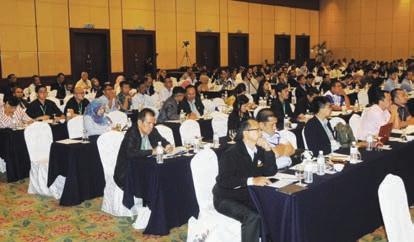


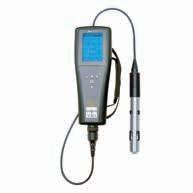









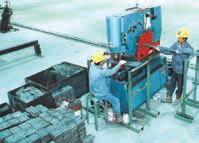
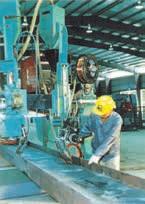




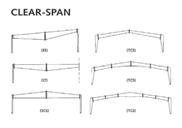

MChin
places and people he encounters and sharing his experiences with others through his photographs and writing.
aliau Basin Conservation Area, often dubbed Sabah’s Lost World, is a patch of nature in the south central part of Sabah, spread over 58,840 ha. A ring of formidable escarpment rising over 1,675m above sea level gives rise to a pristine forest with a unique ecosystem.
The entire basin constitutes the catchment area of Maliau River which leaves the basin through a gorge in the south-east to join Kuamut River, a tributary of the Kinabatangan, Sabah’s longest river.
Maliau Basin is well known for its high concentration of magnificent waterfalls, including the spectacular 7-tier Maliau Falls, the Giluk Falls and the Takob-Akob Falls. The rich biodiversity within and around the basin includes more than 290 species of birds, over 80 species of mammals, many amphibians and reptiles, countless insects, at least 8 species of nepenthes, several endemic orchid species, the rare Rafflesia tengku-adlinii and thousands of other plant species.
and slippery, so much so that even our 4WD vehicles swayed from side to side. The last few hundred metres before the camp was worse – a muddy slope that even 4WD vehicles could not tackle, so we had to struggle up the slope in the dark carrying only what was needed for the night! What a welcome!
Fortunately the following day was dry. We trekked 7km to Camel Trophy Camp on Day 2, climbing a
down in the basin, about 3km from the camp. Both waterfalls were quite magnificent but the descent to reach them was steep and slippery and two of my friends fell. Luckily they were not badly hurt.
On the fourth day, 7 of us and 5 porters trekked 9km over mainly steep and slippery terrain to Bambangan Camp which comprised 3 opensided sheds. One shed was used for cooking and the other two had bunks made of small tree trunks and branches.

My first trip to Maliau Basin was in May 2001. It was organised by the Photography Group of the Malaysian Nature Society, Selangor Branch. Digital cameras were then still considered a novelty and I was using an analogue camera.
Our group of 14 photographers travelled in 4WD vehicles from Kota Kinabalu to Agathis Camp, the first camp in the conservation area. It was more than 20km from the security gate. A heavy downpour earlier had turned the laterite road very muddy
750m steep slope initially, followed by an undulating walk on a ridge. We went through a mossy montane forest with many epiphytes including various species of wild orchids and pitcher plants. We also heard the loud, characteristic cry of a helmeted hornbill, one of the 8 species of hornbills found in Maliau Basin.
The Camel Trophy Base Camp was constructed by the multinational participants of the Camel Trophy Adventure Sabah 1993 as a token of appreciation to the people of Sabah for hosting the off-road challenge.
On the third day, we visited TakobAkob Waterfalls and Giluk Waterfalls
When we were having a simple dinner at 6.30 p.m., it was already dark in the forest even though patches of sky above the forest canopy were still bright. We went to bed at about 8 p.m. Against the subdued hum of the distant waterfalls, different insects came to provide us with nature’s lullaby: First the cicadas, then grasshoppers and finally crickets.
We spent the best part of Day 5 at Tier 6 and Tier 7 of the seven-tier Maliau Waterfalls, the highlight of the trip. However, we could not find a vantage point to see all 7 tiers of the waterfall. Drones were not available then to give us an aerial view of the falls through the lens of an airborne camera.
We got back to Camel Trophy Camp on Day 6 and the whole group returned to Agathis Camp on Day 7 to conclude this often tough but memorable adventure in the Lost World of Sabah.
I visited Maliau Basin again in September 2015, but that’s another story.
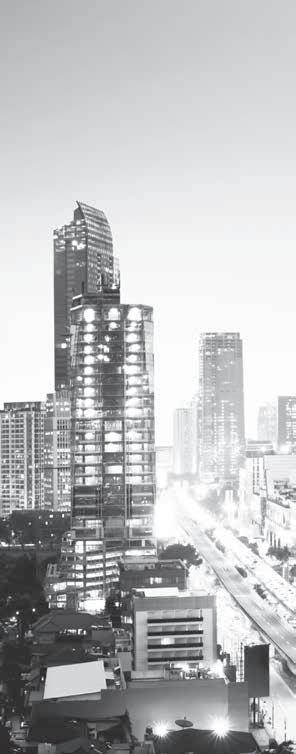










PennWell is delighted to announce that this year it is partnering with MKI (Masyarakat Ketenagalistrikan Indonesia), the Indonesian Electrical Power Society.
Through this exciting partnership, POWER-GEN Asia and the highly-respected Indonesia National Electricity Day will come together to create a unique joint event that provides all international attendees with the best opportunities to engage with Indonesia’s key power industry stakeholders.

Tarikh: 18 Mei 2018
Kepada Semua Ahli,
Berikut adalah senarai calon yang layak untuk menduduki Temuduga Profesional bagi tahun 2018.
Mengikut Undang-Undang Kecil IEM, Seksyen 3.8, nama-nama seperti tersenarai berikut diterbitkan sebagai calon-calon yang layak untuk menjadi Ahli Institusi, dengan syarat bahawa mereka lulus Temuduga Profesional tahun 2018.
Sekiranya terdapat Ahli Korporat yang mempunyai bantahan terhadap mana-mana calon yang didapati tidak sesuai untuk menduduki Temuduga Profesional, surat bantahan boleh dikemukakan kepada Setiausaha Kehormat, IEM. Surat bantahan hendaklah dikemukakan sebulan dari tarikh penerbitan dikeluarkan.
Ir. Mohd Khir bin Muhammad Setiausaha Kehormat, IEM
PERMOHONAN BARU
Nama Kelayakan
KEJURUTERAAN AWAM
NORLIAH BINTI DAUD BE HONS (UPM) (CIVIL, 2003)
ADNAN BIN AHMAD BE HONS (BRADFORD) (CIVIL & STRUCTURAL, 1996)
SITI NUR AZZWA BINTI RAZALI BE HONS (UiTM) (CIVIL, 2009)
NAZURAH BINTI SULAIMAN BE HONS (UTM) (CIVIL, 2009)
KEJURUTERAAN ELEKTRIKAL
MOHD AFIZ BIN MOHD ZOLKEFPELI BE HONS (UNITEN) (ELECTRICAL & ELECTRONIC, 2009) ME (UNITEN) (ELECTRICAL, 2017)
MOHD KHAIRUL FIKRI BIN MOHD
SALLEH BE HONS (UiTM) (ELECTRICAL, 2009)
NORNIKMAN BIN RAHIMIN BE HONS (UTeM) (INDUSTRIAL POWER, 2006) ME (UTM) (ELECTRICAL-POWER, 2016)
MOHD MOHYDDIN BIN MOHAMED NOR BE HONS (UTM) (ELECTRICAL, 1995)
GOVINDAN A/L GOPAL BE HONS (UNITEN) (ELECTRICAL & ELECTRONICS, 2000) ME (UM) (2014)
FARAH IZYAN BT ABDUL LATIF BE HONS (UNITEN) (POWER ELECTRICAL, 2007)
MASTURA BT SAWAWI BE HONS (USM) (ELECTRICAL & ELECTRONIC, 1998) CONVERSION (UNITEN) (2015)
AZRUL MOHD ARIFFIN BE HONS (SOUTHAMPTON) (ELECTRICAL, 2004) PhD (SOUTHAMPTON) (2008)
PETER KENSIL BE HONS (SUNDERLAND) (ELECTRICAL & ELECTRONIC, 1993)
NORLIZA MATASAN BE HONS (UPM) (ELECTRICAL & ELECTRONIC, 2002)
ONG CHEA JIN BE HONS (UPM) (ELECTRICAL & ELECTRONIC, 2002)
W. AMIRUL HAFIZ BIN W. MD. YUSOF BE HONS (UTM) (ELECTRICAL, 2008)
MOHD SUFIAN BIN MOHD YUSOFF BE HONS (UTM) (ELECTRICAL, 1989)
MARLEENAH RAMLEE BE HONS (UNITEN) (ELECTRICAL & ELECTRONIC, 2004)
NUR KHAIRUNNISA BTE NOORAHIM BE HONS (UNITEN) (ELECTRICAL POWER, 2013)
KEJURUTERAAN ELEKTRONIK
GOH CHIN HOCK BE HONS (UNITEN)(ELECTRICAL & ELECTRONIC, 2004) ME (UNITEN) (ELECTRICAL, 2008) PhD (UNITEN) (2012)
NOR HAZRIN BIN ZA’MAN BE HONS (UniMAP) (BIOMEDICAL ELECTRONIC, 2013)
LEONG YENG WENG BE HONS (UNITEN) (ELECTRICAL & ELECTRONICS, 2005)
ME (UNITEN) (ELECTRICAL, 2009)
PhD (KANAZAWA) (2015)
KEJURUTERAAN MEKANIKAL
KU MOHD FAISOL BIN KU BAKAR BE HONS (UTHM) (MECHANICAL, 2008)
ATIKULLAH BIN SALLEH BSc (MARQUETTE) (MECHANICAL, 2006)
SUHANA BINTI CHE SEMAN BE HONS (UTHM) (MECHANICAL, 2006)
KEJURUTERAAN PEMBUATAN
AZMI BIN HASSAN BE HONS (LEEDS POLY) (MANUFACTURING SYSTEMS, 1991) PhD (WALES) (1998)
KEJURUTERAAN BAHAN
ZURATUL AIN ABDUL HAMID BE HONS (USM) (MATERIALS, 2001) MSc (USM) (MATERIALS, 2002) PhD (MELBOURNE, 2011)
KEJURUTERAAN KIMIA
NOORASHRINA A. HAMID BE HONS (UTM) (CHEMICAL, 2004)
PERPINDAHAN AHLI
No. Ahli Nama Kelayakan
KEJURUTERAAN AWAM
36804 TAN CHOON JIN BE HONS (USM) (CIVIL, 2002)
33159 NORLIDA BINTI MOHD SAAD BE HONS (UiTM) (CIVIL, 2010)
25420 FAEZARATUL FAZLEIN BINTI ISA BE HONS (UTM) (CIVIL, 2001)
75266 MOHD AZUAN BIN TUKIAR BE HONS (UiTM) (CIVIL, 2009)
KEJURUTERAAN ELEKTRIKAL
36548 MOHD SABHI BIN BACHOK BE HONS (UMP) (POWER SYSTEM, 2010)
94150 MOHD SUHAIMI BIN MOHD YUNUS BE HONS (UTM) (ELECTRICAL, 2006)
48429 TANESH A/L RAVINCHANDRAN BE HONS (UNITEN) (ELECTRICAL POWER, 2013)
44296 SANDEEP SINGH THALIVAL BE HONS (UTeM) (POWER ELECTRONIC & DRIVE, 2011)
59087 BIBI HAZRINA BINTI ALLI RAHMAN BE HONS (UNITEN) (ELECTRICAL & ELECTRONIC, 2004) MSc (MANCHESTER) (ELECTRICAL POWER SYSTEMS, 2009)
51244 NUR FARHANA BINTI RAMLI BE HONS (UTM) (ELECTRICAL, 2009)
76192 ATIF BIN MOHAMAD JOHARI BE HONS (UNITEN) (ELECTRICAL POWER, 2013)
KEJURUTERAAN ELEKTRONIK
87343 ADZNINA EBERAHIM BE HONS (UiTM) (ELECTRICAL, 2009) MSc (UiTM) (TELECOMMUNICATION & INFORMATION, 2011)
KEJURUTERAAN PEMBUATAN
44597 ZULKARNAIN BIN ABDUL LATIFF BE HONS (BIRMINGHAM) (MANUFACTURING, 1998)
KEJURUTERAAN MEKATRONIK
72127 MUHAMAD HAFIZ BIN MOHAMED ALI BE HONS (STAFFORDSHIRE) (MECHATRONICS, 2008) ME (STAFFORDSHIRE) (MECHATRONICS, 2009)
KEJURUTERAAN KIMIA
30846 NUR MARDHIYA ABD RAHIM BE HONS (UTP) (CHEMICAL, 2008) MSc (UTM) (PROCESS PLANT MANAGEMENT, 2015)
KEJURUTERAAN MEKANIKAL
38334 THIAGARAJEN A/L MUNUSAMY BE HONS (UNITEN) (MECHANICAL, 2006)
33906 SAIFUL HASMADY BIN ABU BAKAR BE HONS (UNITEN) (MECHANICAL,2001) ME (TOKYO INST. OF TECH.) (MECHANICAL AND CONTROL, 2007) PhD (TOKYO INST. OF TECH.) (2015)
96018 NURUL ZULAIKHA BINTI MOHMAD SALLIHHUDIN BE HONS (UTP) (MECHANICAL, 2010)
89527 MOHD SAFARIZAM BIN ABDULLAH BE HONS (UTM) (MECHANICAL, 2004) ME (UTM) (MECHANICAL-ADV. MANUFACTURING TECH. 2015)
57103 TENGKU KHAIRUZZAMAN BIN TENGKU YUSOFF BE HONS (USM) (MECHANICAL, 2007)
PERMOHONAN BARU/PEMINDAHAN MENJADI AHLI KORPORAT Nama Kelayakan
KEJURUTERAAN INSTRUMENTASI DAN KAWALAN
NUR AZHANI BINTI MOHAMAD ROSLI BE HONS (UTP) (ELECTRICAL & ELECTRONICS, 2006)
KEJURUTERAAN KIMIA
TAN LIAN SEE BE HONS (UTM) (CHEMICAL, 2005) MSc (USM) (CHEMICAL, 2008) PhD (UTP) (2016)
KEJURUTERAAN BAHAN No. Ahli Nama Kelayakan
64773 LAI CHIN WEI BE HONS (USM) (MATERIALS, 2009) PhD (USM) (2013)
Title: Half-Day Course on “Training – Practical Insight Toward MSPO Implementation The Malaysian Sustainable Palm Oil (MSPO) on the implementation and the Practical approaches” 14 July 2018
Organised by : Agricultural and Food Engineering Technical Division Time : 8.30 a.m. - 1.00 p.m.
CPD/PDP : 4
Kindly note that the scheduled events are subject to change. Please visit the IEM website at www.myiem.org. my for more information on the upcoming events.
The Sub-Committee of Engineering Hall of Fame under the auspices of the Standing Committee on Professional Practice is proud to invite nominations for the IEM Engineering Hall of Fame Award 2019.
It is timely and expedient to induct and to record the accomplishments of engineers in the country who have or had demonstrated particularly outstanding professional achievements and provided excellent services to the Institution, the engineering industry and the Nation.
The IEM Engineering Hall of Fame is established with the aim to confer recognition and to celebrate the accomplishments of members of the IEM:
• Who have demonstrated outstanding
HALL OF FAME AWARD 2019
professional achievements.
• Who have made significant contributions to the engineering profession, the Institution of Engineers, Malaysia (IEM) and the Nation.
• Who have rendered valuable service to the Community.
The Engineering Hall of Fame will serve as the focal point or showcase of outstanding Malaysian engineers, past and present, who had or have made great contributions to the engineering profession and to the quality of life in Malaysia. Engineers honoured in the Engineering Hall of Fame will also serve as a beacon and as role models for young engineers as well as create greater interest in engineering in general and awareness of the contributions
made by outstanding engineers in the country.
Nominations for the Award are open to Malaysian citizens who are or have been Corporate Members of the IEM.
The closing date for receipt of nominations for IEM Engineering Hall of Fame Award is 30 September 2018.
Please submit nominations to:
Honorary Secretary
The Institution of Engineers, Malaysia Bangunan Ingenieur, Lots 60&62 Jalan 52/4, 46720 Petaling Jaya, Selangor. The nomination form can be downloaded from the IEM website at www.myiem.org.my
For further details, kindly contact IEM Secretariat at 03-7968 4001/2
IEM AWARD FOR CONTRIBUTIONS TO THE ENGINEERING PROFESSION IN MALAYSIA 2019
To encourage an interest in engineering and to recognise important services or contributions to engineering in Malaysia, the IEM Award for Contribution to the Engineering Profession in Malaysia is to be presented to the person(s), who has:
• Contributed to the advancement of engineering in Malaysia, and/or
• Designed and constructed an original engineering device or system of merit and applicability to industry.
This Award is open to all Malaysian citizens and permanent residents.
NOMINATIONS
• Nominations shall be made through a member of the Institution. Each member is restricted to one nomination per year.
• Each nomination shall be accompanied by a brief write up of the services rendered or contributions made or system designed and/or constructed together with relevant photographs and other documents.
• The Award is to be made by the Council upon recommendation by the Awards Committee.
• Nominations will be invited annually. The closing date for receipt of nominations for each year is 30 September.
• The Award shall comprise a metal plaque, a scroll and a sum of RM1,000.
The closing date for nominations is 30 September 2018.
Please submit nominations to:
Honorary Secretary
The Institution of Engineers, Malaysia Bangunan Ingenieur, Lots 60&62 Jalan 52/4, 46720 Petaling Jaya, Selangor. The nomination form can be downloaded from the IEM website at www.myiem.org.my
For further details, kindly contact IEM Secretariat at 03-7968 4001/2
IEM OUTSTANDING ENGINEERING ACHIEVEMENT AWARD 2019
The IEM Outstanding Engineering Achievement Award is created to confer recognition to an organisation or body for outstanding engineering achievements within Malaysia. The award will be given to an organisation or body responsible for an outstanding engineering project in the country.
The basis for the award shall be an engineering achievement that demonstrates outstanding engineering skills which has made a significant contribution to the profession and to the quality of life in Malaysia. In making the selection, the following criteria will be given special consideration:
1. Contribution to the well-being of people and communities,
2. Resourcefulness in planning,
3. Creativity in the solution of design problems,
4. Pioneering use of materials and methods,
5. Innovations in planning, design and construction,
6. Unusual aspects and aesthetic values.
Engineering achievements which include, interalia, the following can be submitted for consideration:
• Bridges, Tunnels, Waterways Structures, Roads
• Telecommunications of national/ international character, Power Transmission and Transportation
• Dams and Power Stations
• Ports and Harbours
• Building and Structures
• Airports
• Water Supply, Waste Disposal Projects
• Military projects such as bases, launching units, harbour facilities
• Drainage, Irrigation and Flood Control Projects
• Local design and manufacture of high technology products
• Energy, Heat, Mass Transfer
• Outstanding work in engineering research and development
• Chemical processing of indigenous raw resources such as rubber, palm oil and various other local plants
• Innovative use of local engineering materials
• Outstanding contribution in engineering education
• Original discovery of useful engineering theory
Nominations are invited from all members of the Institution. Each nomination submitted
should contain a brief summary/write-up of the project in approximately 1,000 to 2,000 words together with full relevant reports on the project and three copies of supporting documentation including photographs. A project or component part thereof which has received an earlier award, from IEM does not qualify for nomination.
• The award in the form of a metal plaque, naming the achievement shall be given to the organisation or body responsible for the project for permanent display.
• The award shall be presented with due ceremony at an appropriate function of the IEM.
The closing date for nominations is 30 September 2018.
Please submit nominations to:
Honorary Secretary
The Institution of Engineers, Malaysia Bangunan Ingenieur, Lots 60&62 Jalan 52/4, 46720 Petaling Jaya, Selangor.
The nomination form can be downloaded from the IEM website at www.myiem.org.my
For further details, kindly contact IEM Secretariat at 03-7968 4001/2
The objective of the Award is to encourage interest in engineering and to recognise potential among young engineers in Malaysia. The Award will be presented to the person who has shown outstanding ability and leadership qualities, either i. in the design and/or construction of an engineering device or system of merit; or ii. in the research and development or teaching of engineering.
In any one year, the Award may be made in either one or both of the categories mentioned above. If the Award is to be made in only one of the two category may be made in the year. The Award is open to candidate who are:
The primary objective of the Award is to recognise the contributions by women engineers. This Award may also incidentally encourage interest in engineering among women and encourage them to strive towards greater excellence. The Award will be presented to the woman engineer who has shown outstanding ability and leadership qualities, or has been a pioneer in any more of the following areas:
• In the design and/or construction of an engineering device or system, structural system, planned development, environmental improvements or,
• In the research and development of engineering device, systems, processes and/or materials, publication of paper or,
• In the teaching of engineering or,
• In the management of engineering projects,
• Entrepreneurship in the commercial sector.
i. Registered member with the Board of Engineers, Malaysia and under 35 years of age ii. Malaysian citizens or permanent residents of Malaysia iii. Graduate or Corporate Members of IEM.
The Proposer may or may not be a member of IEM. However, each nomination shall be supported by a brief recommendation from two Referees who are Corporate members of IEM. If the Proposer himself is a Corporate member of IEM (or higher), then he may also act as one of the two required Referees.
The Award will comprise a cash prize of RM500.00, a scroll and plaque, to be presented
In making the selection, the following criteria will be given special consideration:
• Contribution to the well-being of people and communities
• Resourcefulness in planning and in the solution of design problems
• Pioneering in use of materials and methods
• Innovations in planning, design and construction
• Unusual aspects and aesthetic values
The Award is opened to candidates who are:
• Registered members of the Board of Engineers, Malaysia,
• Malaysian citizens or permanent residents of Malaysia,
• Graduate or Corporate Members of The Institution of Engineers, Malaysia.
The Proposer may or not be a member of IEM or BEM, or an engineer. However, each nomination shall be supported by a brief recommendation from two Referees who are
with due ceremony to each recipient of the Award.
The closing date for nominations is 30 September 2018
Please submit nominations to:
Honorary Secretary
The Institution of Engineers, Malaysia Bangunan Ingenieur, Lots 60&62
Jalan 52/4, 46720 Petaling Jaya, Selangor. The nomination form can be downloaded from the IEM website at www.myiem.org.my
For further details, kindly contact IEM Secretariat at 03-7968 4001/2
Graduate or Corporate member of IEM. If the Proposer is herself either a Corporate or Graduate member of IEM (or higher), then she may also act as one of the two required Referees.
The Award shall comprise a cash prize of RM800.00, a scroll and plaque, to be presented with due ceremony to each recipient of the Award.
The closing date for nominations is 30 September 2018
Please submit nominations to:
Honorary Secretary
The Institution of Engineers, Malaysia Bangunan Ingenieur, Lots 60&62
Jalan 52/4, 46720 Petaling Jaya, Selangor.
The nomination form can be downloaded from the IEM website at www.myiem.org.my
For further details, kindly contact IEM Secretariat at 03-7968 4001/2
Title: 9th Annual General
SENARAI PENDERMA KEPADA WISMA DANA BANGUNAN IEM
Institusi mengucapkan terima kasih kepada semua yang telah memberikan sumbangan kepada tabung Bangunan Wisma IEM. Ahli-ahli IEM dan pembaca yang ingin memberikan sumbangan boleh berbuat demikian dengan memuat turun borang di laman web IEM http://www.iem. org.my atau menghubungi secretariat di +603-7968 4001/5518 untuk maklumat
lanjut. Senarai penyumbang untuk bulan April 2018 adalah seperti jadual di bawah:
15
Meeting of the Consulting Engineering Special Interest Group
21 July 2018
Organised by : Consulting Engineering Special Interest Group
Time : 11.00 a.m. - 1.00 p.m.
CPD/PDP : 2
Kindly note that the scheduled events are subject to change. Please visit the IEM website at www. myiem.org.my for more information on the upcoming events.
97568 CHAN JIA JIAT
97366 CHOO CHEE PHIN
97563 YAP WOEI SHYONG
97439 SOH YANG WEE
97495 ANANDAN A/L ARUMUGAM
97570 MAXWEL BETI ANAK PIT
97347 TARMIZI BIN AHMAD
97484 MOHAMAD IKMAL BIN ZULKIFLI
97491 VANESSA JANE BINTI ZAINIP
97368 WALDEN HARRY BEATTY
97492 ONG LIONG SIK, TERENCE
97341 TING YING YING, KAREN
97346 KHOO YIT SHEUN
B.E.HONS.(UTAR SG LONG) (CIVIL, 2018)
B.E.HONS.(UTAR)(CIVIL, 2011)
B.E.HONS.(UTAR)(CIVIL, 2016)
B.E.HONS.(UTAR)(CIVIL, 2017)
B.E.HONS.(UTHM)(CIVIL, 2011)
B.E.HONS.(UTHM)(CIVIL, 2011)
B.E.HONS.(UTM)(CIVIL, 2010)
B.E.HONS.(UTM)(CIVIL, 2016)
B.E.HONS.(UTM)(CIVIL, 2016)
B.E.HONS.(UTP)(CIVIL, 2015)
M.E.HONS.(NOTTINGHAM) (CIVIL, 2018)
M.E.HONS.(QUEEN'S OF BELFAST)(CIVIL, 2016)
M.E.HONS.(THE UNI. OF NOTTINGHAM)(CIVIL, 2017)
KEJURUTERAAN BAHAN
97351 MOHAMAD AZNAN BIN MOHD NAJIB B.E.HONS.(USM)(MATERIALS, 2014)
KEJURUTERAAN BIOPERUBATAN
97558 ABDUL RAUF BIN ABU BAKAR
B.E.HONS.(MALAYA) (BIOMEDICAL-PROSTHETIC & ORTHOTIC, 2014) M.E.SC. (MALAYA)(BIOMEDICAL, 2017)
KEJURUTERAAN ELEKTRIKAL
97432 MAHMUD HUZAIFI BIN MOBARAK B.E.HONS.(MMU)(ELECTRICAL, 2014)
97569 OH WEI SZIN B.E.HONS.(TAYLOR'S UNI.) (ELECTRICAL & ELECTRONIC, 2017)
97333 GAN YI XIAN B.E.HONS.(THE UNI. OF MELBOURNE)(ELECTRICAL, 2013)
97371 MUHAMMAD HILMI BIN DZULKEFLI
97485 MOHAMAD NAZRIN BIN MOHAMAD NAJIB
B.E.HONS.(UITM)(ELECTRICAL, 2011)
B.E.HONS.(UITM)(ELECTRICAL, 2013)
97498 NURUL FARHANA BINTI AZIS @ AZIZ B.E.HONS.(UNIKL-BMI) (ELECTRICAL, 2017)
97423 JAYASELAN A/L KRISHNAN B.E.HONS.(UNITEN) (ELECTRICAL & ELECTRONICS, 2017)
97487 MUHAMAD AFIQRI BIN IBRAHIM B.E.HONS.(UNITEN) (ELECTRICAL POWER, 2013)
97501 PAD KHAIRUL ANUAR BIN RAMLI
97420 NORASYIDAH BINTI OMAR
97353 MUHAMAD SHAHRIZUAN BIN TUKIMAN
97359 MUHAMMAD IZWAN BIN MOHD SANI
97419 LOH JUI BOON
B.E.HONS.(UTHM)(ELECTRICAL, 2012)
B.E.HONS.(UTM)(ELECTRICAL, 2011)
B.E.HONS.(UTM)(ELECTRICAL, 2013)
B.E.HONS.(UTP)(ELECTRICAL & ELECTRONICS, 2011)
B.E.HONS.(UTP)(ELECTRICAL & ELECTRONICS, 2011)
97413 ONG TING YU M.E.HONS.(UCL)(ELECTRONIC & ELECTRICAL, 2012)
KEJURUTERAAN ELEKTRONIK
97549 AMIRULLAH BIN ARIES
97554 ROZMIE RAZIF BIN OTHMAN
B.E.(UMP)(ELECTRONIC, 2012)
B.E.HONS.(MMU) (ELECTRONICS- COMPUTER, 2006)
97425 FAIRUZ RIZAL BIN A RASHID B.E.HONS.(MMU) (ELECTRONICSMULTIMEDIA, 2001) M.SC.(UITM)(QUANTITATIVE SCIENCES, 2005)
97365 MOHD NIZAMUDDIN BIN ABD LATIF B.E.HONS.(UITM) (ELECTRONICSCOMMUNICATION, 2013)
97431 MOHD HAFIZ BIN MUKHTAR B.E.HONS.(UNIMAP) (INDUSTRIAL ELECTRONIC, 2009)
97357 WONG CHIN HONG B.E.HONS.(UNIMAP) (INDUSTRIAL ELECTRONIC, 2011) PHD. (USM) (MICROELECTROMECHANICAL SYSTEMS, 2017)
97358 FOO KHAI WEI, EVELYN
97343 MUHAMAD FAEZ ASYRAF BIN ASHAARI
97444 MOHAMED SHUAIB BIN MOHAMED SAHEED
KEJURUTERAAN KIMIA
97354 TAN CHEE SIANG
97483 YONG WAI YEE
97560 WONG KEE SEN, LOUIS
97488 P.PRAKAS A/L S.PALANYCHAMY
97443 MOHD AZRI BIN WAGI
97427 DR. HAZLINI BINTI DZINUN
97340 MOHAMAD AZREEN FIRDAUS BIN ABD AZIZ
97334 WONG ZHI KIANG, LUKE
B.E.HONS.(UNIMAS) (ELECTRONICS & TELECOMMUNICATIONS, 2009)
B.E.HONS.(UTM)(ELECTRICALELECTRONIC, 2016)
B.E.HONS.(UTM)(ELECTRICALMECHATRONICS, 2009) PHD.(UTP)(ELECTRICAL & ELECTRONICS, 2014)
B.E.HONS.(MALAYA)(CHEMICAL, 2017)
B.E.HONS.(USM)(CHEMICAL, 2012)
B.E.HONS.(UTAR KAMPAR) (CHEMICAL, 2018)
B.E.HONS.(UTAR) (CHEMICAL, 2012)
M.E.SC.(UTAR)(2016)
B.E.HONS.(UTM)(CHEMICAL, 2005)
B.E.HONS.(UTM) (CHEMICAL, 2009)
M.E.(UTM)CIVILENVIRONMENTAL MANAGEMENT, 2012) PHD.(UTM)(GAS, 2016)
B.E.HONS.(UTM) (CHEMICAL-GAS, 2011)
M.E.(UTM)(GAS, 2014)
M.E.HONS.(UNI. OF BIRMINGHAM)(CHEMICAL, 2016)
KEJURUTERAAN KOMPUTER
97561 MOHAMMAD NASSEER BIN SAAD
97350 MOHAMMAD RAFIE BIN YUNOS
B.E.HONS.(UTM)(COMPUTER, 2009)
B.SC.(RENSSELAER POLYTECHNIC INST.) (COMPUTER SYSTEMS, 2007)
KEJURUTERAAN MARINE
97552 MOHAMMAD ZAREEF BIN ARSAD
B.E.HONS.(UTM)(MECHANICALMARINE TECHNOLOGY, 2014)
KEJURUTERAAN MEKANIKAL
97496 MOHD KAMIL BIN HASAN
97377 AHMAD ZUBAIR BIN MOHD RAZALI
97571 MOHD DZULKIFLI BIN ISMAIL
97360 HO KYE WENN
97494 FOO TZEH YIANG, GABRIEL
97557 LIEW WUI SEN
97338 WONG YING CHAI
97344 NG YEN MING
97422 NEO WEI QI, ADELINE
97336 CHIEW CHIN WEE, LOUIS
97416 VENGKATA GIRI A/L ENGKANNAH
97551 MOHAMAD RIDZUAN BIN JAMLI
97441 YEE CHEE KIT
97376 KIRUBAHARAN A/L MERAPAN
97424 RASIDIN BIN SENAWI
97339 JAFFAR BIN IBRAHIM
97434 ADAM HARIZ BIN AUGUSTINE
97426 HAFIZ BIN SHAMSULHUDA
97345 MOHD EZZANIE BIN ADNAN
97342 MUHAMMAD AINUL HAIDAR BIN YAHAYA
97361 PUTERA NAZREEN SHAH BIN MOHAMAD ZAKI
B.E.HONS.(UTM)(MECHANICAL, 2016)
B.E.HONS.(UTP)(MECHANICAL, 2014)
97435 AHMAD SYAFIQ AIMAN ZULKIPLI B.SC.(RENSSELAER POLYTECHNIC INST.) (MECHANICAL, 2008) M.SC.(UITM)(CIVILCONSTRUCTION, 2014)
KEJURUTERAAN MEKATRONIK
97497 THEENGAHARAN A/L MUTHUSAMY B.E.HONS.(APU) (MECHATRONIC, 2012)
97428 DR FATANAH MOHAMAD SUHAIMI B.E.HONS.(IIUM) (MECHATRONICS, 2008) PHD.(UNI. OF CANTERBURY) (MECHANICAL, 2013)
97363 MOHD NOR IQBAL BIN ZULKIPLI B.E.HONS.(IIUM) (MECHATRONICS, 2017)
97436 MUHAMMAD AFIF BIN MANSOR B.E.HONS.(UNISEL) (MECHATRONICS, 2011)
97364 LEE CHEE KEEN B.E.HONS.(UTEM) (MECHATRONICS, 2016)
97348 CHONG MIN CHUN M.E.HONS.(THE UNI. OF SHEFFIELD)(MECHATRONICS, 2015)
KEJURUTERAAN PEMBUATAN
97493 CHEONG JAN XI B.E.HONS.(BRADFORD) (INDUSTRIAL, 2010) M.E.M.(UPM)(2016)
97489 MUHAIMIN MUSTAQIM BIN JAMALUDIN B.E.HONS.(UITM)(MECHANICALMANUFACTURING, 2017)
97564 MUSFIRAH BINTI ABDUL HADI
B.E.HONS.(UKM) (MANUFACTURING, 2008)
KEJURUTERAAN PERTANIAN
97562 YAP CHORNG SHIN B.E.HONS.(UPM)(BIOLOGY & AGRICULTURAL, 2002)
KEJURUTERAAN PETROLEUM
97440 MUHAMMAD FIRDAUS BIN ADYNEY
B.E.(TAKUSHOKU UNI.) (MECHANICAL SYSTEMS, 2011)
B.E.HONS.(CARDIFF UNI.) (MECHANICAL, 2013)
M.SC.(UNI. OF SOUTH WALES, 2015)
B.E.HONS.(IIUM)(MECHANICALAUTOMOTIVE, 2013)
B.E.HONS.(MALAYA) (MECHANICAL, 2017)
B.E.HONS.(MONASH) (MECHANICAL, 2017)
B.E.HONS.(SWINBURNE UNI. OF TECH.)(MECHANICAL, 2011)
B.E.HONS.(SWINBURNE UNI. OF TECH.)(MECHANICAL, 2014)
B.E.HONS.(TAR UC) (MECHANICAL, 2016)
B.E.HONS.(UMP)(MECHANICAL, 2016)
B.E.HONS.(UNI. OF WESTERN AUSTRALIA)(MECHANICAL, 2014)
B.E.HONS.(UNISEL) (MECHANICAL, 2012)
B.E.HONS.(UNITEN) (MECHANICAL, 2003)
B.E.HONS.(UPM)(MECHANICAL, 2007)
B.E.HONS.(UTEM) (MECHANICALAUTOMOTIVE, 2011)
M.E.(UTM)(MECHANICAL, 2015)
B.E.HONS.(UTEM) (MECHANICAL-STRUCTURE & MATERIAL, 2009)
B.E.HONS.(UTHM) (MECHANICAL, 2006)
B.E.HONS.(UTHM) (MECHANICAL, 2008)
B.E.HONS.(UTM)(MECHANICAL, 2004)
B.E.HONS.(UTM)(MECHANICAL, 2008)
B.E.HONS.(UTP)(PETROLEUM, 2015)
KEJURUTERAAN TELEKOMUNIKASI
97337 OOI HOONG CHUAN B.E.HONS.(MALAYA) (TELECOMMUNICATION, 2008)
97433 SEE BEE LOON B.E.HONS.(MALAYA) (TELECOMMUNICATION, 2012)
PERMOHONAN MENJADI AHLI ‘INCORPORATED’ No. Ahli Nama Kelayakan
KEJURUTERAAN ELEKTRIKAL
97482 KARTHIKEYAN A/L RAJAMOHAN
B.E.HONS.(NORTHUMBRI AT NEWCASTLE) (ELECTRICAL & ELECTRONIC, 2013)
97480 LOW LIANG HING B.SC.(ROBERT GORDON UNI.) (ELECTRONIC & ELECTRICAL, 1996)
97481 MUHAMMAD HAKIM BIN SALIM B.E.TECH.HONS.(UNIKL BMI) (ELECTRICAL, 2015)
PERMOHONAN MENJADI AHLI ‘AFFILIATE’ No. Ahli Nama Kelayakan
KEJURUTERAAN ELEKTRONIK
97479 BASRI BIN BERAHIM B.SC.(UMS)(PHYSICS WITH ELECTRONICS, 2004)
Note: New list of the Transfer Graduate, Graduate, Incorporated, Affiliate and Associate would be published in the next page. For the list of approved “ADMISSION TO THE GRADE OF STUDENT”, please refer to IEM web portal at http://www.myiem.org.my.

Yes! I would like to be a subscriber of The Institution of Engineers, Malaysia’s publications
Name: _________________________________________________________________________________________________________
Mailing Address: _________________________________________________________________________________________________
Country: ________________________
Company/Institution: ______________________________________________________________________________________________
Title: ____________________________________________________________________________________________________
Telephone No: _________________________ Fax: _________________________ Email: _________________________________
New Subscriber Renewal
Please commence my subscription from: _________________________(month/year) Signature: _______________________________
To start your subscription of IEM’s publications, complete this form and mail it back to the address below. For faster processing, fax it to: +603 7493 1047. Thank you.
What is your primary job title?
Corporate Management (including chairman, president, proprietor, partner, director, vice president, general manager, division manager, import/export manager, other corporate title)
Management (including project/contract/equipment/service/transport district manager, clerk of works, other technical or operating manager)
Engineering/Design (including chief engineer, chief designer, civil/ highway/mechanical/planning engineer, other engineering/design title)
Buying/Purchasing (including chief buyer, buyer, purchasing officer, other buying/purchasing title)
Titles allied to the field (architect, consultant, surveyor, research and development professor, lecturer, supervisor, superintendent, inspector or other allied title)
Others (please specify) ____________________________
What type of organisation do you work in? (Tick one box only)
Contractor
Sub-contractor specialist
Design and build contractor
Consulting engineering/architectural/quantity surveying practice
Mining/quarrying/aggregate production company
Petroleum producer
International/national authorities
National/regional/local government
Public utilities (electricity, gas, water, deck and harbour, other)
Manufacturer
Distributor/importer/agent
Construction department of large industrial/Commercial concern
Association/education establishment/research
Construction equipment hire/rental company
Project/construction management consultancy
Others (please specify) _______________________________
What are the main activities of your organisation? (Tick all that apply)
Constructions of:
Roads/bridges

Manufacturer of:
Construction equipment
Dams/reservoirs/irrigation Cement
Harbours/offshore structures Other construction materials
Foundations/tunnels Distribution Pipelines/refineries Construction equipment
Structures/steel work Construction materials
Building (commercial, industrial) Hire/rental of construction equipment
Housing Design
Construction management Earth-moving/open cast mining Deep mining Aggregate production
Others (Please specify) _________________________________________
Rate (Please tick)
RM360.00 - 12 issues of JURUTERA
RM84.00 - 2 issues IEM Journal (Half-yearly)
Terms and Conditions:
1) The subscription is to be prepaid.
2) Please make cheque payable to Dimension Publishing Sdn. Bhd.
3) Subscriptions are not refundable.
4) Magazine/s will be sent to the mailing address given.
5) Students are entitled for a 20% discount from the above subscription rate.
6) Students must submit a photocopy of the student identification card together with the payment.
7) The above rate is inclusive of delivery charges and applicable in Malaysia only.
8) Additional delivery charges will apply to overseas subscribers.
For subscription enquiries, please contact +603-7493 1049 or email to info@dimensionpublishing.com

JURUTERA has an estimated readership of 168,000 professionals. Our esteemed readership consists of certified engineers, decision making corporate leaders, CEOs, government officials, project directors, entrepreneurs, project consultants, engineering consulting firms and companies involved with engineering products and services.
Our business partners can be assured that their products and services will be given the circulation and exposure they deserve, thus maintaining a sustained advertising presence to our core readers of decision-making engineers and technical experts. Our website offers an even wider market reach, with added international presence, aided by our international affiliation with official engineering bodies all over the world. Our online and offline advertising features such as banner advertising, article sponsorship and direct e-mail announcements have proven to be successful marketing strategies that will set the businesses of our partners apart from their competition.
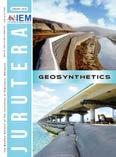
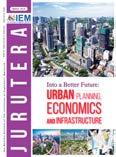



For advertising enquiries, please contact:





